

Navigating Money in Argentina: A Traveller’s Guide to Money Matters in 2024
Travelling to Argentina and wondering how to navigate the confusing topic of money in Argentina? This guide will help you understand cash, credit cards and more – along with handy tips I picked up living in Argentina for two years.
IMPORTANT! This article has been updated in December 2023 following the election of Javier Milei as Argentina’s president.
If you’re planning a trip to Argentina , you’ve probably stumbled upon a complex topic in your research: money.
Money in Argentina is a unique… confusing… complex situation. It’s unlike any other country I’ve ever been to. With raging inflation and decades of uncertain economic policy, it’s no wonder that visitors and residents alike struggle to wrap their heads around the different forms of currency exchange rates, the infamous mercado azul (blue market) and the ever-changing prices.
As someone who lived in Argentina for two years and grappled with these topics myself, I’m here to share my knowledge and tips on navigating money matters in this beautiful country.
In this guide, I’ll walk you through what you need to know to plan your visit, whether you should bring cash or cards, if you should use ATMs, how to exchange money and more!
This blog post may contain affiliate links, meaning if you book or buy something through one of these links, I may earn a small commission (at no extra cost to you).
What's in this article (Click to view)
Understanding currency in Argentina
The official currency of Argentina is the Argentine peso, denoted as ARS. On signs, you’ll see the dollar sign ($) used.
The peso comes in various denominations, including coins of 1, 2, 5 and 10 pesos, and bills of 10, 20, 50, 100, 200, 500, 1000 and 2000 (the country introduced the 2000-peso note in 2023 to deal with spiralling inflation, and also phased out the 5-peso bill because it had such little value).
The 1000-peso note is worth less than US$1.50, so you’ll always be carrying large wads of cash with you!
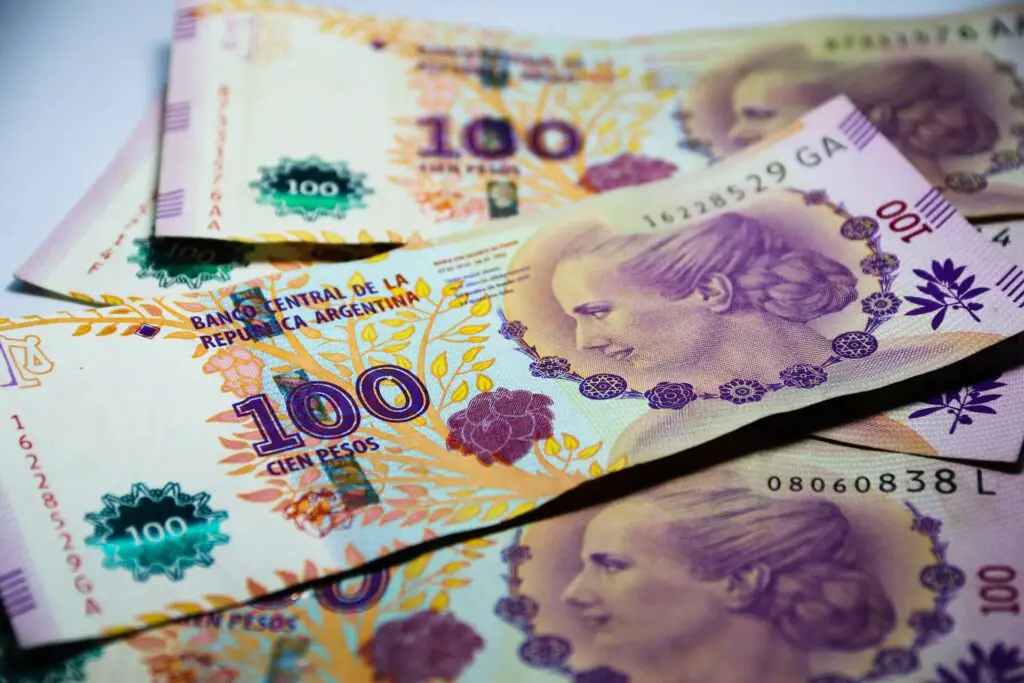
But what you most need to understand is that the Argentine peso has been troubled by severe inflation for decades. This inflation makes the value of the peso quite unstable, with prices of goods and services frequently changing to keep up.
While many countries have been plagued by inflation of 7% or 8% over recent years, inflation in Argentina has reached 180% (and in decades past it’s even hit 20,000%).
It’s not uncommon to walk into a restaurant one day and pay a certain amount for a meal, only to walk in two days later and pay double – or more – for that same meal. Restaurant owners (and other shops) have to constantly adjust their prices to keep up.
This economic instability can be quite a surprise if you’re used to a more stable currency.
It’s tough for a country that was one of the richest in the world at the beginning of the 20th century.
The Blue Market: Argentina’s informal currency exchange
Because of this high inflation, Argentines prefer to hold onto and trade in US dollars, which is seen as a more stable currency.
This situation has led to the development of two distinct markets for exchanging currency. (Well, in fact, there are more than 10 different exchange rates but in this article I’m only going to talk about three!)
There’s the official market, where the government sets the exchange rate, and then there’s the mercado azul or the blue market, where the exchange rate is determined by supply and demand.
It’s not uncommon for the blue market rate to be significantly higher than the official rate – in fact, it’s can be double or more. Rates can fluctuate almost daily. When I originally wrote this article, the unofficial (blue) rate was 2.5 times higher than the official rate.
>> Check today’s rates online here <<
HOWEVER , since the election of Argentina’s new president, Javier Milei, in 2023, the situation has changed somewhat.
Upon taking office, Milei devalued the peso. His ultimate plan is to dollarise the Argentinian economy, although this will be challenging and will take time.
This means that the gap between the official and blue rates has tightened, and you can’t get the same value you once could when exchanging US dollars for pesos.
Is it still worth it to bring dollars and exchange them on the blue market?
I think it is still worth bringing US dollars to Argentina and changing them here – either at the official rate or the blue rate.
The reason for this is that ATMs are awful. You can only withdraw a small amount of cash and the fees to do so are high.
I recommend having a mix of US dollars (to exchange to pesos), credit cards and ATM cards when you visit Argentina.

Exchanging money in Argentina
So you’ve brought your US dollars or Euros with you to Argentina – but how do you now get Argentine pesos?
While some restaurants and shops do accept dollars and Euros (there’ll usually be a sign with their rate, usually at the counter), they’re the exception rather than the rule.
Cash is king, so you will need to exchange that foreign currency for pesos.
Here are a few ways you can exchange money in Argentina – both officially and on the blue market.
Note that US dollars will usually get a better rate than Euros. And US dollars are easier to change outside of Buenos Aires.
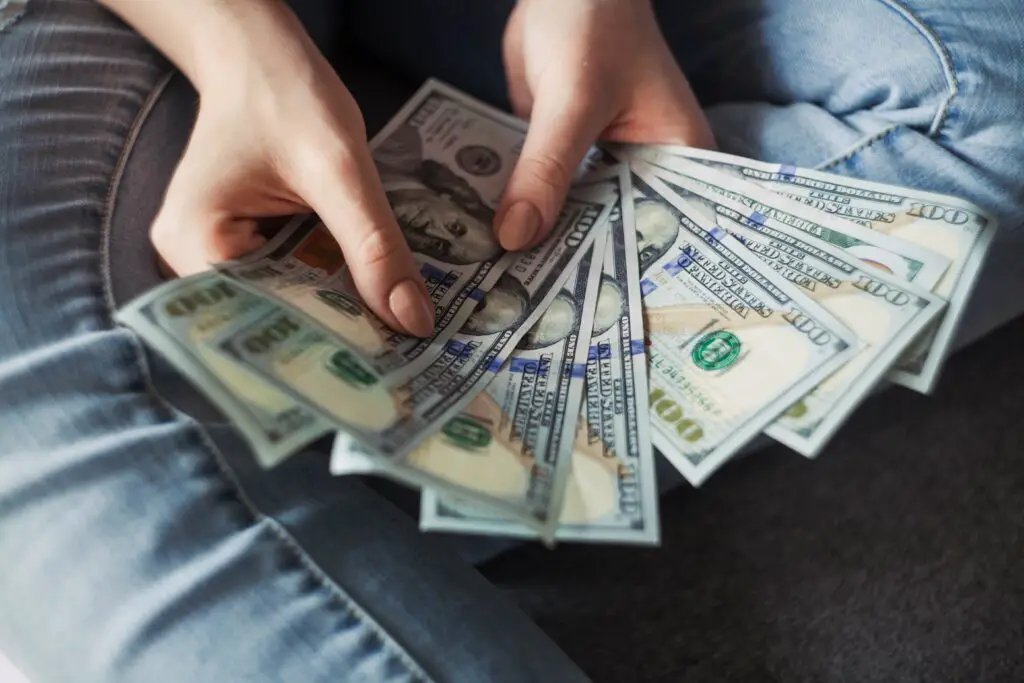
Cuevas (which means caves in Spanish) are the informal currency exchange houses that use the blue market rate. Here, you’ll get the most advantageous rate.
Argentines use cuevas daily, and they’re safe places to exchange money.
I recommend asking your hotel concierge or a trusted Argentine friend for a recommendation for a cueva. While I said they’re safe, there are of course unscrupulous people everywhere who are more than happy to take advantage of a clueless tourist.
You might consider going with an Argentine the first time so you get the hang of it.
This is one of the easiest ways to exchange money in Argentina, and you’ll find cuevas in Buenos Aires and in major cities and towns. There are some recommended cuevas in this Facebook thread .
2. Calle Florida
Wander down Calle Florida (Florida Street) in Buenos Aires’ Microcentro at any time of day and you’ll hear the call of “Cambio! Cambio!”
These people are called arbolitos (or little trees, because they’re always standing there and because of the green colour of US dollars) and they’ll exchange money for you at the blue rate.
The exchange doesn’t happen there on the street – you’ll follow them into a shop or a cueva or even into a newsstand for the swap.
They usually have a machine to check for fake US dollar notes – and you’ll need to check your peso notes carefully as well when they’re handed over to you.
This was how I first exchanged money when I moved to Argentina and it did feel strange! They’re usually pretty safe – but trust your gut and keep walking if a situation doesn’t feel safe.
One of the advantages of changing money on Calle Florida is that you can go from arbolito to arbolito for the best rate, so shop around before you exchange.
3. Currency exchange houses and banks
If the blue market makes you nervous, then stick with regular currency exchange houses like banks. They will, of course, use the official rate.
You might consider this when you first land in Buenos Aires , just so you have a little bit of cash on you. This’ll be handy to pay for your trip into the city (taxis don’t take credit cards) if you haven’t organised a transfer from the airport .
There’s a Banco La Nacion in Ezeiza International Airport where you can change a few dollars into pesos.
Hotels can also exchange money for you, as well as exchange bureaus ( casas de cambio ), which can be found around the city. Ask your hotel for the nearest casa de cambio .
You’ll need ID to exchange money at banks and exchange bureaus.
Western Union in Argentina
If you don’t want to bring a lot of US dollars or Euros in cash with you to Argentina, then Western Union is a great option. You can send money to Argentina using their service.
Western Union can provide you with an exchange rate that’s around the same or even higher than the blue rate (however keep in mind the pretty high fee that Western Union charges).
How to send money to Argentina with Western Union?
It’s quite simple: you send the money from your home bank account to yourself and then pick up the cash at a local Western Union branch.
It’s an efficient way to transfer money from your home country to Argentina without carrying large amounts of cash. Do remember that some transactions can take a few days to process, so plan ahead.
There are several Western Union branches in Buenos Aires – including one at Ezeiza International Airport (although the opening hours aren’t great if you’re arriving early in the morning or late at night).
Outside of Buenos Aires, there are also Western Union branches. Some have withdrawal limits, though, so you’ll need to check before you do a transfer.
Credit cards in Argentina
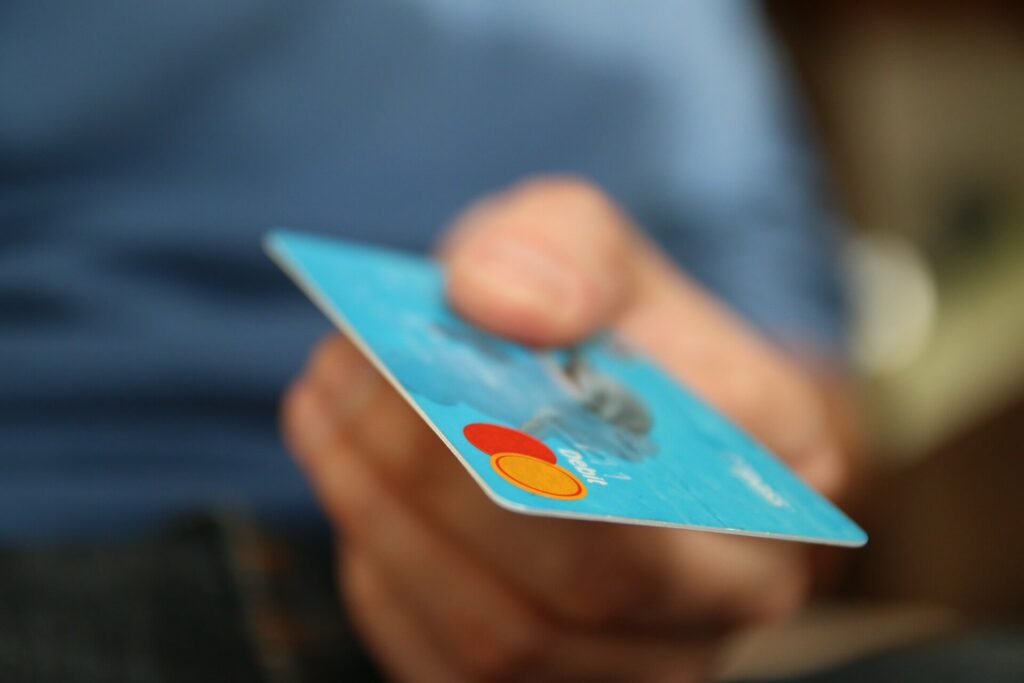
When I lived in Argentina, I rarely paid for anything with a credit card, except for clothes and when we did our full grocery shop each week. At restaurants, cafés and convenience stores I always had cash on hand. At that time, credit cards charged the official rate, so I was always better off paying in cash.
However, since late 2022, foreign credit cards now receive a better rate. It’s called the MEP rate (you can find the latest MEP rate online here ) and it’s just shy of the blue dollar rate but higher than the official rate. At the time of updating this article (December 2023), those rates were:
- Official rate: $842,68
- Blue market rate: $990
- MEP rate: $971,85
If you use a foreign card in Argentina, this MEP rate will apply. Visa will charge you that rate at the time of purchase, while Mastercard charges the official rate and then refunds the difference a few days later.
This is another good way to avoid carrying huge amounts of cash.
On the topic of credit cards, American Express is rarely accepted anywhere, so leave that card behind.
But you need to keep in mind that credit cards aren’t always the most practical option in Argentina.
In larger cities, most upscale restaurants, hotels and retail outlets readily accept credit cards. But in smaller shops and restaurants – and in smaller towns in Argentina – cash is usually the only accepted form of payment.
Always ask before you sit down in a restaurant if they take credit card: “Acepta tarjeta?”
Either way, you’ll always need to have some amount of cash on you when you’re travelling around Argentina.
Speaking of restaurants, here are 50 of my favourite places to eat in Buenos Aires .
Expert traveller tip: If you’re going to rely on credit cards, always bring a backup credit card in case you have any issues with your main card. Make sure that back up card is a different type (Mastercard, Visa etc). I’ve had cards rejected multiple times when overseas so learned this trick pretty quickly!
Using ATMs in Argentina
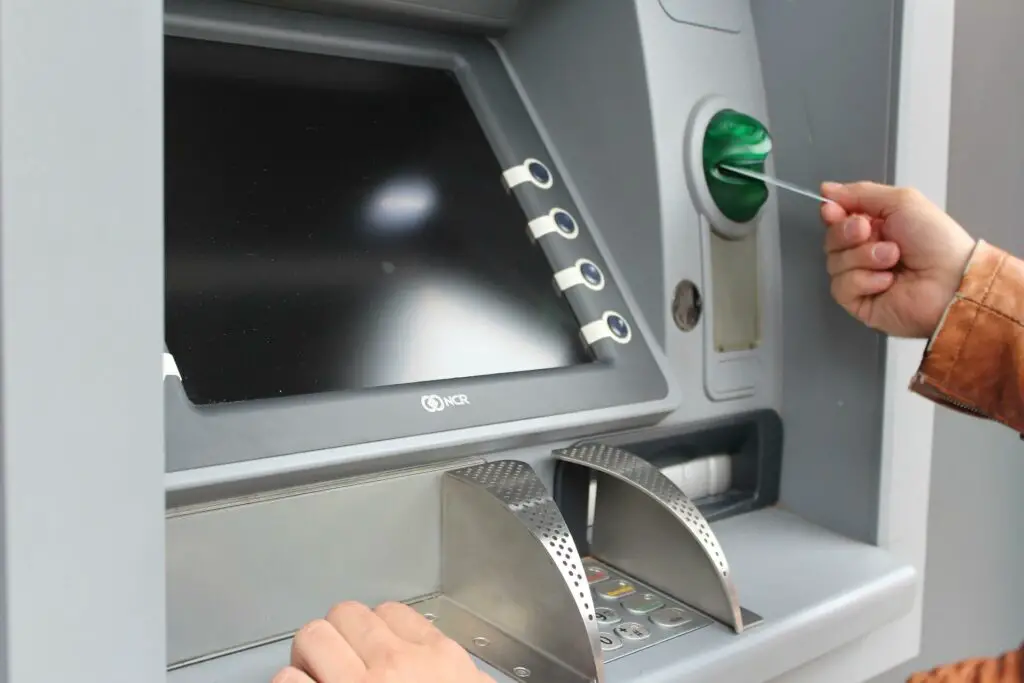
Should you use ATMs in Argentina?
This one’s easy: avoid using ATMs as much as you can!
In Argentina, ATMs have low withdrawal amounts and high fees, so you’ll be getting screwed all round.
ATMs should only be used as a back-up or last resort method for accessing pesos.
One important thing to note is that ATMs often run out of cash ahead of weekends and public holidays, so if you do think you’ll need to withdraw cash, do it as soon as possible.
Argentina money tips
When it comes to handling money in Argentina, here are a few handy tips I’ve learned from experience:
- Avoid exchanging money into pesos before you arrive in Argentina – you’ll get screwed over.
- Bring US$100 notes – the cleaner and crisper, the better. You’ll get a better rate for these in the cuevas.
- Cuevas will rarely want to change US$10 or US$20 notes. I’ve changed US$50 notes, but it was done reluctantly.
- Keep some small peso notes on hand – trust me, many shop owners aren’t fond of giving change.
- Be aware of money restrictions on bringing USD. Like most countries around the world, there’s a $10k limit without having to declare it.
- I’d recommend booking hotels and tours in advance online using your credit card. It simplifies things and cuts down the amount of cash you need on hand.
- If you’ve got pesos left over at the end of your trip, spend them! You’ll get a lousy rate transferring them back to US dollars or Euros. Buy some souvenirs in Buenos Aires to take home with you.
- Don’t get too hung up on the blue rate! Even at the official rate you’ll (usually) find Argentina an affordable destination.
Safety and security considerations
Carrying large amounts of cash and one or two credit cards can make you nervous. Remember, carrying the equivalent of US$50 means you’ll have around 175 x 1000-peso notes on you! That’s a stack of cash.
When it comes to keeping your money safe in Argentina, a few practical accessories can make all the difference:
- Money belt : May seem tacky, but it’s a relatively discreet way to carry money, provided you don’t access it in public.
- Passport scarf : These are actually quite useful – a stylish and less conspicuous way to keep your money and passport safe.
- Anti-theft backpack : Hidden zippers and slash-resistant materials provide an extra layer of security for your belongings.
- Lock : Keep your backpack or suitcase locked up when it’s unattended in your hotel room.
Remember, no safety device is foolproof. Argentina is a fairly safe country , but always stay alert and practice common sense in public spaces.
Final thoughts: Money in Argentina
Managing money in Argentina can seem daunting, but with a little preparation, you’ll navigate it like a pro.
So after reading this Argentina money guide, what money should you bring to Argentina?
I recommend:
- Bringing US dollars or Euros to exchange into cash – work out in advance how much money you think you’ll need for each week of your Argentina itinerary
- Bringing credit cards for bigger purchases at larger restaurants, shopping centres and so on – and don’t forget a back-up credit card
- Booking hotels and tours in advance (on your credit card)
- Using Western Union to send yourself money and avoid carrying a large amount of cash – this is the best option if you’re travelling for a long time in Argentina
Money in Argentina: FAQs
Can i use travel cards in argentina.
You can use travel cards (like Wise ) in Argentina, but you’ll get an even worse rate than the official rate. Plus you’ll be dealing with the same challenges as using a credit card – not everyone accepts credit card. A Wise card might be a good back up option, but it shouldn’t be what you rely on for accessing money in Argentina.
Can I use traveller’s checks in Argentina?
I don’t know anyone who uses traveller’s checks these days! But if you insist… Yes, you can exchange traveller’s checks in Argentina, but you’re going to spend your time in banks doing the exchange. Time that is better spent out enjoying the city!
Is it better to use cash or credit cards in Argentina?
While credit cards are widely accepted in cities and larger towns, smaller establishments and vendors in rural areas may only accept cash. It’s best to carry a mix of both for convenience.
Can I withdraw money from ATMs in Argentina?
Yes, ATMs are available across Argentina. However, withdrawal fees can be high, and the exchange rate may not be as favourable as the blue market rate. Don’t forget to inform your bank about your travel plans to avoid any potential issues with using your card abroad.
What is the blue market in Argentina?
The ‘blue market’ refers to the unofficial currency exchange market in Argentina where US dollars or Euros can be exchanged for Argentine pesos at a rate higher than the official exchange rate. This isn’t always the case and it changes as governments introduce new economic policies.
Are US dollars accepted in Argentina?
While some places in Argentina may accept US dollars, it’s always more practical to use Argentine pesos. You can exchange your US dollars at a blue market exchange for a better rate.
How safe is it to carry cash in Argentina?
As with any travel destination, carrying a large amount of cash can carry some risk. However, with sensible precautions such as using a money belt or anti-theft backpack , it’s usually safe. Always be alert in public spaces and avoid showing that you’re carrying a large amount of money.
Did you find this article helpful? Consider buying me a coffee as a way to say thanks!
Got any questions about using money in Argentina for your upcoming travels? Drop them in the comments below.
Related posts
Before you go… you might like these Argentina travel blogs:
- Argentina itinerary ideas: Options for 1-4 weeks
- Plan a Trip to Argentina: 19 Travel Tips for First-Time Visitors
- Travel Insurance for Argentina: What You Need to Know
- Renting a Car in Argentina: 17 Helpful Tips and Tricks
ARGENTINA TRIP ESSENTIALS
- Book your flight to Argentina online with Skyscanner . I like how this site allows you to find the cheapest days.
- Find a great hotel in Argentina. Check prices on Booking.com and Expedia online.
- Check out the huge range of day tours throughout Argentina on GetYourGuide or Viator . There’s something for everyone.
- Keep those bottles of wine you’ll be buying safe in these wine bags .
- A copy of the Lonely Planet guide to Argentina will be handy. Also pick up a Spanish language guidebook to help you navigate your visit.
- One thing I always purchase is travel insurance ! Travel Insurance Master allows you to compare across multiple policy providers, while SafetyWing is great for long-term travellers and digital nomads.
PIN IT FOR LATER
Save this guide to money in Argentina to Pinterest for later.
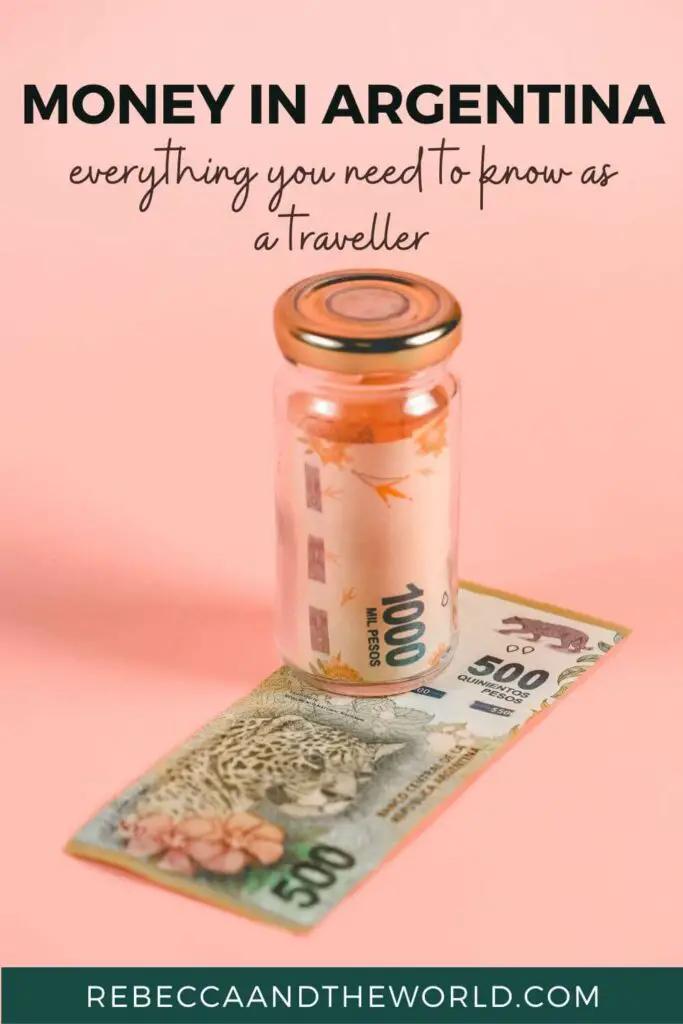
About REBECCA
I'm a travel junkie who started dreaming about seeing the world from a very young age. I've visited more than 40 countries and have a Master of International Sustainable Tourism Management. A former expat, I've lived in Australia, Papua New Guinea, Argentina and the United States. I share travel resources, tips and stories based on my personal experiences, and my goal is to make travel planning just that bit easier.
22 thoughts on “Navigating Money in Argentina: A Traveller’s Guide to Money Matters in 2024”
Hi Rebecca, thanks this is super helpful. We are traveling to Argentina in a week from Ireland. The MEP rate seems to be better than the blue rate at the moment according to https://www.lanacion.com.ar/dolar-hoy/ . Is this your experience? And does this mean it is better to use credit cards in and around Buenos Aires? Is there a good app to download that allows you to quickly compare rates? Do you think I better changing Euros to USD before I come, or bringing Euro? Also do you know if Brazilian Real can be purchased in BA? thank you in advance!! Aran
Hi Aran, The rates change regularly, that’s right! They’re on par at the moment. You can use your credit card – but you do need to have cash because not every restaurant/business/cafe accepts credit card. So use a mix of both so you’re not caught out.
The newspaper websites are the most up-to-date with the rates, they’re what I’ve always referred to… I don’t think there is an app that shows the rates (but I could be wrong – I’ve just never needed one).
Euros will be fine, but you will usually get a better rate with USD (and USD is more readily accepted by money changers).
I’ve never actually purchased reales in Buenos Aires, but I’m sure you can – you’ll need to go to an official currency house to do, though.
Have a great trip – hope this helped!
I know your article is about money and it’s very useful, I’m just wondering off topic about the Mosquito situation. I was planning a stay in April but started reading about the significant infestation of mosquitoes plaguing the country. Is this a major situation that makes walking and enjoying the nights unbearable?
Hi Michael, the weather will be cooler in April so the chance of mosquitoes should be much lower!! Right now it’s not fun in certain parts, but it should improve by April.
When I make a reservation for a hotel room that is quoted $200 USD and I pay with my credit or debit card, will my rate be adjusted based on the official rate of exchange? Sheila S.
It depends – how are you paying? If on a website like Booking.com, then the quoted rate will be as it is. If you have arranged with a hotel directly, then it will determined by them which rate you use.
Hi Rebecca, I would pay for hotels with my visa card. I typically reserve on the hotel site. Some are American hotels such as Marriott and others would be Argentine. For example if the hotel price is quoted as $200 USD, would it be calculated based on the exchange rate and ultimately be less than $200 USD? I am trying to budget accordingly. Thank you.
Hi Sheila, for an American site, you can expect to pay in USD always. For an Argentine site, you’d need to check with each one directly, as each hotel charges differently and would likely use a different rate. Have a great trip!
Hi Rebecca, really appreciated your article. Being an Aussie I was wondering if you had any experience with exchanging AUD to ARS whether through Western Union or the other ways mentioned above. Did you use any Australian credit cards to make purchases? I have a Wise Travel card and card with Commonwealth Bank, so curious to see if you used any of them whilst in Argentina. Additionally when you went to El Calafate and El Chalten what were your experiences with making purchases there via card and cash? Were taxis/car rental/buses usually card or cash? Cheers
Hi Nicole! I’ve never transferred AUD via Western Union – but I always used my Aussie credit cards when I lived there (along with exchanging USD in cash into pesos). I’d check with your bank just to be 100% sure but I never had a problem with them (I used my Aussie credit cards for grocery shops, larger restaurants, clothes, bars etc).
Taxis and public transport are always cash – everywhere in the country, even in Buenos Aires (although you can use Uber in BA).
I’ve never used a Wise travel card there, I’m afraid!
We have just returned from Argentina and Chile. We found your site a good guide before we left. Western Union worked ok and we got1280 pesos to the pound. We were not aware that you have to withdraw the whole amount that you transfer. We were under the impression we could call it off in bits. Some Western Union outlets have limits on how much you can withdraw so we had to go to the main branch in Buenos Aires. Monzo card worked perfectly in Chile and Argentina. We got a rate of 1400 pesos to the pound on it.
Thanks Sue – that’s great to know about not being able to withdraw in smaller amounts.
Glad you had a great trip!
Is there any difficulty getting dollars back OUT of Argentina? I need to travel to Buenos Aires to settle some affairs, and want to take the proceeds back to the U.S. with me. But I’ve been told there are hefty fees for taking dollars out of the country. However, I can’t find any information about that online. So… is it true?
Hi Emjay, I can’t find much info on this either. I think your issue would be the country that you’re next going to, they’re likely to have a $10k import limit as well?
Speaking of cash, I was wondering about tipping in Buenos Aires. Do I need some pesos or will small US dollars be ok? Or is tipping even expected? Leaving in about 30 days and will only be in BA for 2 days. Would the same be true for other countries such as Chile and Peru? Thanks for your excellent advice.
Hi Judy, small peso notes are usually best for tipping – that makes it easier for staff/businesses to actually use it (rather than then having to exchange it if you tipped them with USD).
From my experiences visiting Chile and Peru, tipping is also voluntary – but always appreciated. Again, using the local currency when tipping is best.
Have a great trip!!
In february 2023, the Western Union office at the airport was closed permanently. So we had to withdraw pesos at the official change rate.
Thanks for sharing this, will update the article!
Are Uruguayan pesos accepted?
Hi Diane, No, Uruguayan pesos aren’t accepted in Argentina. In Buenos Aires some stores may accept Brazillian reals, but never Uruguayan pesos.
You’ve done a great job with this discussion and I wish I had read it prior to arriving in BA from the US in mid November 2023. Slightly stronger language about the official vs. the non-official exchange rates would be helpful. For example, on one site the writer said it is best to consider Argentina a “cash only country,” which drives home the point that you will be better off estimating your spending and bringing that amount of dollars. To estimate it’s important to decide if you’re going to exchange at the official rate or at the much much better unofficial or “blue” rate”. You say peso prices are still “affordable” at the official rate, which I agree with; however, remember that the blue rate has lately (November/December’23) been about 168 percent better than the official rate! That’s on everything you pay for with your ARS pesos. Usually “doubling your money” is not real, but this is real, easy, and safe and is actually *more than doubling* the value of your dollars. One last comment: Western Union is indeed a very good option here- compared to usually being a last resort in the USA- as you describe because their fee, which be US$37. is virtually negligible considering the practically surreal amount of additional pesos you’re getting using the [slightly downward adjusted] blue rate that Western U. gives you. The WU app works well and you’ll know the exact exchange rate you’re getting and any transaction fee they may charge. Your first transaction usually has “no fee”. Take USD cash, get the best rate with that, and, if you underestimate, use WU. Rebecca makes excellent additional points on my points and on WU.
Thanks David. It’s a tricky thing to navigate in Argentina! I’ve kept the article quite general as things do change regularly in Argentina – sometimes the blue rate does double your money, other times it’s only slightly higher. Hopefully it helps anyone who is planning their trip!
Leave a Comment Cancel reply
MORE INFORMATION
ABOUT WORK WITH ME CONTACT PUBLISHED WORK
AFFILIATE DISCLOSURE
AS AN AMAZON ASSOCIATE I EARN FROM QUALIFYING PURCHASES
© 2024 REBECCA AND THE WORLD
Privacy Policy
I ACKNOWLEDGE THE WURUNDJERI AND BOON WURRUNG PEOPLE OF THE KULIN NATION AS THE TRADITIONAL OWNERS OF THE LANDS AND WATERWAYS OF THE AREA I LIVE ON. I PAY MY RESPECTS TO ELDERS PAST AND PRESENT AND CELEBRATE THE STORIES, CULTURE AND TRADITIONS OF ALL ABORIGINAL AND TORRES STRAIT ISLANDER PEOPLE ACROSS AUSTRALIA.

- Privacy Overview
- Strictly Necessary Cookies
This website uses cookies so that we can provide you with the best user experience possible. Cookie information is stored in your browser and performs functions such as recognising you when you return to our website and helping our team to understand which sections of the website you find most interesting and useful.
Strictly Necessary Cookie should be enabled at all times so that we can save your preferences for cookie settings.
If you disable this cookie, we will not be able to save your preferences. This means that every time you visit this website you will need to enable or disable cookies again.

Argentina Adds Another Exchange Rate—for Tourists Only
The argentinian government implemented a new regulation on november 4, 2022, allowing visitors using credit and debit cards to obtain a more favorable exchange rate than the official rate..
- Copy Link copied

The government hopes the new rule for credit and debit cards will discourage all-cash transactions that leave cash-laden tourists more vulnerable to robbers.
AP Photo/Natacha Pisarenko
In recent years, a moment often came when a visitor to Argentina suddenly grasped they could have gotten a lot more bang for their bucks if only they had brought cash to buy pesos on the unofficial market.
A dollar sometimes would buy twice as many pesos in informal cash trading as the amount in pesos it would get in purchases using a credit or debit card covered by the official exchange rate.
“You can almost hear the blood drain out of their voice when they realize this,” said Jed Rothenberg, owner of a travel agency that specializes in trips to Argentina.
That should, at least in theory, be a thing of the past as of Friday. The government has implemented a new regulation allowing visitors using credit and debit cards to get more pesos than the official rate gives.
On Friday, one dollar was officially worth 157 Argentine pesos. But in the unofficial market, commonly referred to as the “blue dollar,” it could be worth as much as 285 pesos. And in the system that will now be used by credit card operators, it was at 292.
The informal foreign currency traders became more ubiquitous after strict capital controls were put in place in 2019 in an effort to protect the local currency from a sharp devaluation amid the country’s high inflation.
Why the new rule?
The government hopes the new rule for credit and debit cards will discourage all-cash transactions that leave cash-laden tourists more vulnerable to robbers—and also often deprive the government of sales taxes that are frequently ignored if there is no electronic trail.
Rothenberg sought for years to explain Argentina’s different exchange rates and the difficulties that tourists faced in using credit and debit cards. He wasn’t always successful.
“The vast majority of people are just confused: ‘You mean there’s more than one exchange rate and that one of these can be as much as a double- or even triple-digit difference?’,” Rothenberg said.
The new rule won’t do much to reduce confusing complexities. It adds yet another exchange rate to the more than 10 that already exist in Argentina—a system that makes it impossible to say simply what a peso is worth.
The government also imposes different taxes on converting foreign currency depending on what it will be used for, leading to rates that have colloquial names like the “Qatar dollar” for travelers (a reference to the World Cup), the “Netflix dollar” for streaming services, and the “Coldplay dollar” to book foreign artists to play in the country.
The reason why no one can really answer how much a peso is worth is because “it’s worth something different for each person,” said Martín Kalos, an economist who is a director at Epyca Consultores, a local consultancy.
“The government has been segmenting the market. There is no one value, there are multiple prices depending on who you are or what operation you want to do,” he said.
The government’s goal is to have a stronger peso to pay for the country’s imports in hopes of keeping price rises from worsening. The economy registered an annual inflation rate of 83 percent in September.
President Alberto Fernández’s administration “is implementing palliative measures, or patches, because it has elections a year from now” and any efforts to correct these distortions would likely cause economic pain that would be costly at the ballot box, Kalos said.
Argentina has gone through so many financial crises in recent decades that its citizens are distrustful of their currency, so those who earn enough to save usually do so in dollars or euros.
Even economically savvy Argentines are often confused.
Anyone who has not received subsidies from the state or who operates in certain financial markets can buy as much as $200 a month but must add an additional 65 percent tax to the official exchange rate.
Argentines who pay for foreign currency purchases on their credit cards pay a surplus of 75 percent over the official rate. But that is as long as they spend less than $300. If they spend more than that a month, the surplus increases to 100 percent.
Argentines can also buy dollars through the financial markets via operations through bonds or stocks but pay a peso price similar to that in the informal market. That is the system made available to credit card processing companies Friday.
Experts said they have to see how the new system for visitors is implemented before knowing whether it will be successful.
But if implemented well, Rothenberg said the change could be a boon for tourists.
“They’re just using their credit card, they don’t care about the details,” he said. “If they actually make this work, Argentina could be one of the top tourist destinations within the next couple of years, especially with how expensive the U.S. and Europe are right now.”

What Argentina's New Tourist-Friendly Preferential Exchange Rate Means For You
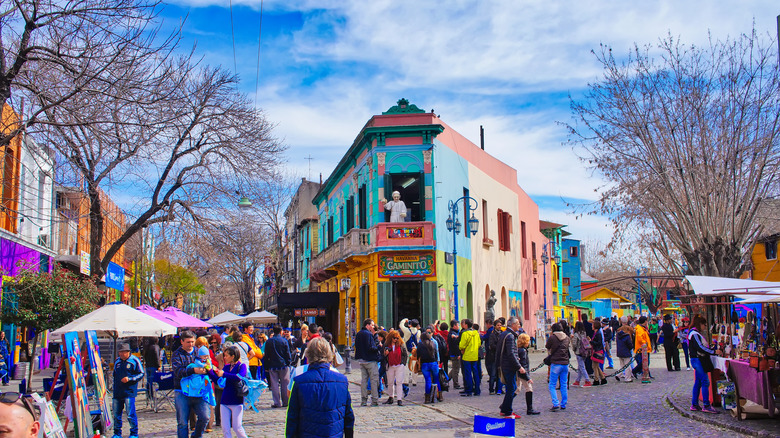
Stunning geography, a captivating culture, and flavorful local cuisine are just a few of the many reasons travelers set their sights on Argentina. From the colorful rock formations of Salta and the Buenos Aires Tango Festival to the awe-inspiring views at Iguazú Falls, Argentina is packed with places to explore. As Latin America's second-largest country, Argentina welcomes more than 7 million international visitors annually to enjoy all it has to offer.
While it's an appealing place to visit, financing the experience here isn't always simple. Since the 1980s, Argentina has struggled significantly with inflation. At the end of 2022, economists feared inflation could reach 100%.
The country's practice of printing money for public spending through the central bank is frequently named as a driver of inflation. Currency depreciation is another detrimental factor. A culture of informal foreign currency traders in Argentina means there are more than 10 varying exchange rates at any given time. This setup can make it difficult for visitors to determine what the peso is worth. This is especially problematic when attempting to use debit or credit cards.
A new regulation known as "the foreign tourist dollar" was put in place in Argentina on November 4, 2022, in an attempt to ease the burden. It's designed exclusively to address tourist-friendly currency exchange rates. While it doesn't necessarily simplify the complex system in place, it could make using credit and debit cards a streamlined process for foreign visitors to achieve more favorable exchange rates during their travels.
How the new rate works for foreign tourists
In Argentina, the official exchange rate has long been acknowledged as the least effective route to making a traveler's money go further. Instead, the country hosts a widespread black market commonly referred to as the "blue market." Within this system, travelers either exchange currency at a lower than the official rate under the table or pay for services directly in US dollars to achieve savings.
The new tourist-friendly preferential exchange rate that is now in place was crafted partially in hopes of minimizing this cash-heavy culture. The option for foreign visitors to use debit and credit cards more freely in exchange for better rates has the potential to boost the government through a documented, electronic trail of sales tax. Additionally, government officials hope tourists carrying less cash into the country will reduce opportunities for crimes like theft .
Before the tourist-friendly preferential exchange rate, foreign credit and debit cards used across Argentina were universally subjected to the official exchange rate. This new preferential rate adjusts the standard so that foreign credit and debit card payments used for purchases apply to the Electronic Payment Market ( MEP ) instead. As of January 2023, that meant foreign travelers could make their US dollars go 78% further by paying with a credit or debit card.
Potential benefits for travelers and residents
Both Mastercard and Visa joined the new preferential exchange rate program in December 2022. The inclusion of these credit card companies has made purchasing options in Argentina accessible to a wide range of foreign travelers. While the benefits across cards are equivalent, there are some differences to note.
Visa cardholders see their payments processed at the MEP dollar rate immediately when purchasing products in Argentina. Those making purchases through Mastercard will initially receive the official exchange rate. Reimbursement for the difference between the official exchange rate and the MEP will be applied a few days later.
One benefit of this exchange rate for foreign travelers is the opportunity to visit at a lower overall cost. Not worrying about extreme rate fluctuations could make travel to Argentina less stressful. Similarly, not worrying about where to go on the "blue market" for profitable transactions could boost tourism and safety simultaneously.
The new rate could also benefit some Argentine residents. Presently, those who hold foreign credit cards can take advantage of the new rate by making their local purchases on a Visa or Mastercard. A "tourist dollar" exchange could be advantageous for locals as inflation continues to rise.
While the program is new, travelers will likely continue to carry cash out of habit. With time, this new rate boosts the potential for significant cultural change as well as savings for visitors to the country. The combination could see Argentina enjoying enhanced traveler numbers in the near future.
Stay up to date with notifications from The Independent
Notifications can be managed in browser preferences.
UK Edition Change
- UK Politics
- News Videos
- Paris 2024 Olympics
- Rugby Union
- Sport Videos
- John Rentoul
- Mary Dejevsky
- Andrew Grice
- Sean O’Grady
- Photography
- Theatre & Dance
- Culture Videos
- Food & Drink
- Health & Families
- Royal Family
- Electric Vehicles
- Car Insurance deals
- Lifestyle Videos
- UK Hotel Reviews
- News & Advice
- Simon Calder
- Australia & New Zealand
- South America
- C. America & Caribbean
- Middle East
- Politics Explained
- News Analysis
- Today’s Edition
- Home & Garden
- Broadband deals
- Fashion & Beauty
- Travel & Outdoors
- Sports & Fitness
- Sustainable Living
- Climate Videos
- Solar Panels
- Behind The Headlines
- On The Ground
- Decomplicated
- You Ask The Questions
- Binge Watch
- Travel Smart
- Watch on your TV
- Crosswords & Puzzles
- Most Commented
- Newsletters
- Ask Me Anything
- Virtual Events
- Betting Sites
- Online Casinos
- Wine Offers
Thank you for registering
Please refresh the page or navigate to another page on the site to be automatically logged in Please refresh your browser to be logged in
Argentina introduces better exchange rate for tourists that will help holiday money go further
‘the measure introduces an exchange rate 90 per cent superior to the official one applying to all tourist expenses in the country’, article bookmarked.
Find your bookmarks in your Independent Premium section, under my profile
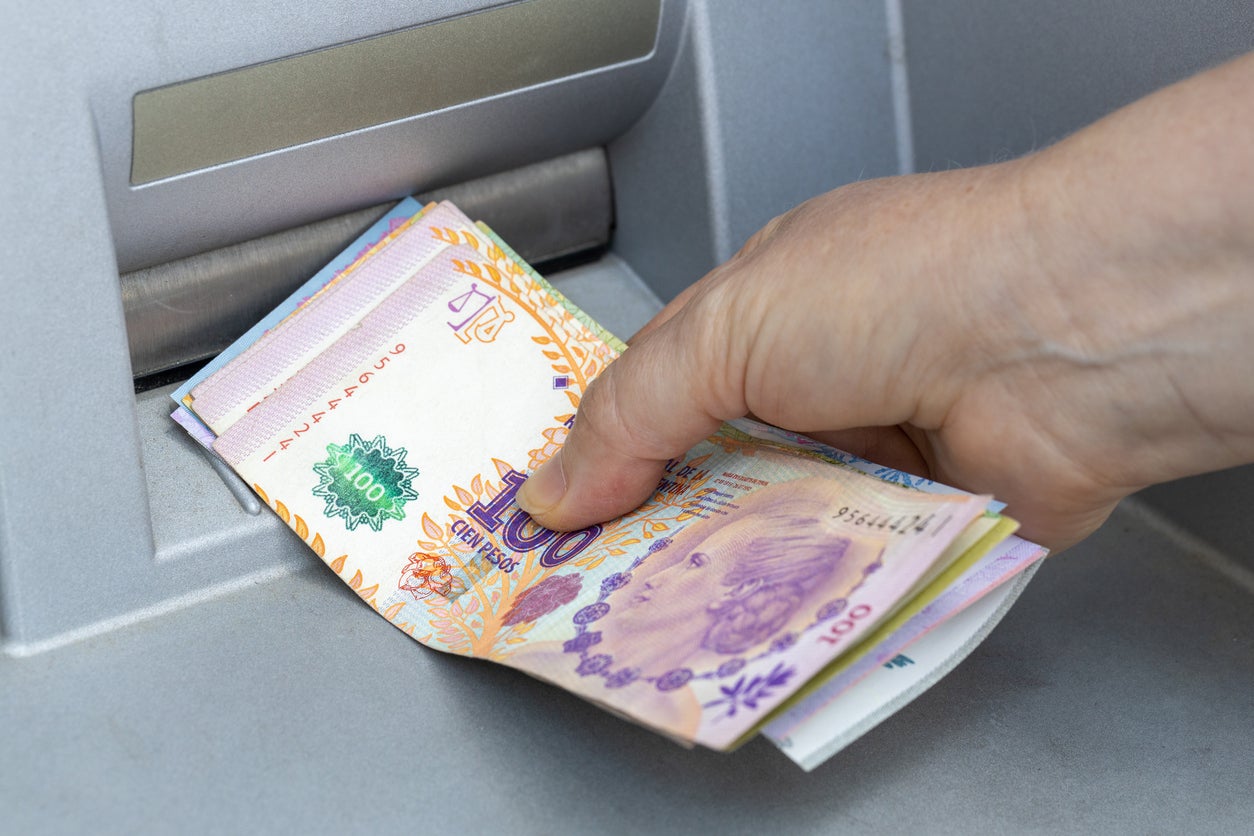
Sign up to Simon Calder’s free travel email for expert advice and money-saving discounts
Get simon calder’s travel email, thanks for signing up to the simon calder’s travel email.
Argentina’s government has introduced a new regulation for exchange rates, meaning tourists using credit and debit cards will get more pesos for their money than previously.
In the past, poor exchange rates for card users have meant it is better value to bring large amounts of foreign currency and change it informally via unofficial traders (known as the “Dolar Blue”).
Tourists using this method have historically got up to twice as many pesos per pound or dollar than they would have by using their foreign debit or credit card, for which the exchange rate is based on the official one used by banks.
However, following the change to government regulations, the exchange rate for credit or debit card users is far better - equal to the “Dolar MEP” (one of 10 or so different exchange rates in Argentina’s somewhat confusing system).
Based on a cash conversion on Friday 4 November - the day the new rate took effect - one US dollar was officially worth 158 Argentine pesos, but a tourist could get up to 285 pesos by exchanging with a “Dolar Blue” trader.
Following the change to government regulations, however, they could get a superior 292 Argentine pesos per dollar with the more favourable rate for non-Argentinian credit and debit card transactions.
The government hopes the move will encourage tourists not to bring wads of cash for exchange (leaving them vulnerable to muggings and robberies), as well as allowing official transactions to be taxed.
The change is also aimed at tempting in more international tourists, who will get far more for their money and may feel more secure making payments on card rather than exchanging cash with unofficial traders.
“Effectively the measure introduces an exchange rate 90 per cent superior to the official one applying to all tourist expenses in the country, including excursions, meals and tourist packages,” reported the Buenos Aires Times .
“According to official calculations, of the roughly US$200m-$250m entering the country monthly via tourism, only US$30m comes through the formal sector,” it added of the untracked money coming in via the “Dolar Blue” system.
Jed Rothenburg, director of Buenos-Aires-based travel specialist Landing Pad BA, told the Herald : “If they actually make this work, Argentina could be one of the top tourist destinations within the next couple of years, especially with how expensive the US and Europe are right now.”
Join our commenting forum
Join thought-provoking conversations, follow other Independent readers and see their replies
Subscribe to Independent Premium to bookmark this article
Want to bookmark your favourite articles and stories to read or reference later? Start your Independent Premium subscription today.
New to The Independent?
Or if you would prefer:
Want an ad-free experience?
Hi {{indy.fullName}}
- My Independent Premium
- Account details
- Help centre

Currency in Argentina: Exchange rate, Tourist Dollar, Dollar Blue, …
When traveling to Argentina it is important to know what the official currency in the country is. The currency in Argentina is the Argentine Peso (ARS) since 1992.
But the Argentine Peso and currency exchanges have some secrets. In this article, I explain to you all about the Argentine Peso, the Dollar Blue, and the tourist exchange rate.
Read more: How get from Ezeiza (EZE) airport to Buenos Aires city
Currency in Argentina
The official currency of Argentina has had a difficult time and is experiencing it again for several years. The official currency in Argentina is the Argentine Peso. You will see the $ in stores and with card payments. Not to be mistaken with the symbol of the US dollar. The USD is expressed in U$S in Argentina. You will normally also see this on payment terminals.
You can pay with the Argentine peso throughout the country. But the Argentines also like you to pay in US dollars. If you want to pay in USD, I advise you to continue reading the article. Because in Argentina there is high inflation. This means that the national currency is struggling and that it is best to use all your exchanged Argentine pesos in the country and not exchange them outside the Argentine borders.
Read more: Argentina Travel Checklist for first-time visitors
How does the Argentine peso look like
Below you can see what the Argentine banknotes look like. The layout can sometimes be different because new designs have been made over the years. The largest banknote is 2000 Peso. The smallest can go up to 5 Pesos. There are also 1, 2, 5, and 10 peso coins.
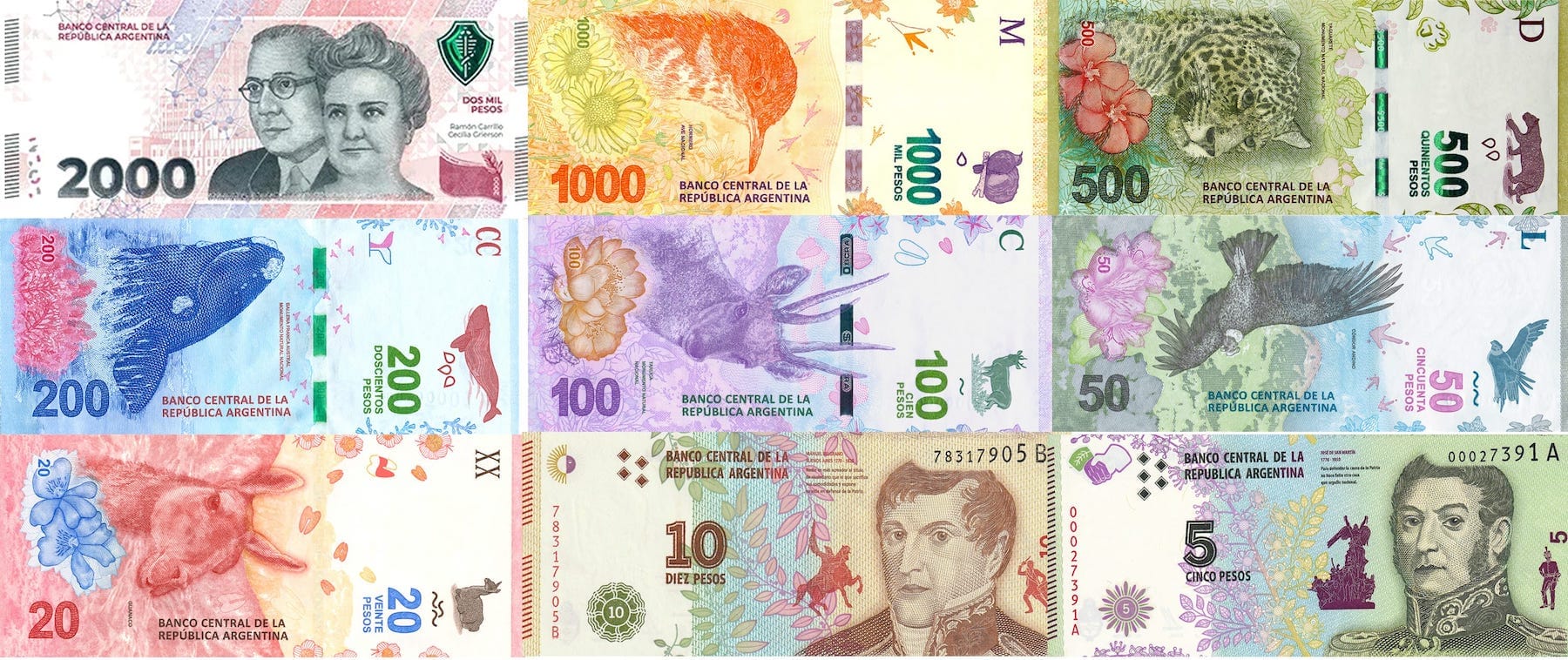
Where to exchange USD, EUR, GBP to Argentine Peso
Most likely you will land at Buenos Aires International Airport to start your trip in Argentina. I recommend taking cash with you when traveling. Preferably USD or EUR because they are easy to exchange.
You can exchange your cash in one of the many exchange offices in the city. I wrote an article that you should know before changing money in Argentina. Be sure to read this because some USD or EUR banknotes are not accepted or have a lower exchange rate. Check here the official exchange rate.
Read more: Where to exchange money in Buenos Aires
Currency in Argentina for tourists
Due to the high inflation in the country, the Argentine peso quickly loses its value against other currencies. This has created parallel exchange rates in Argentina. One such exchange rate is the tourist exchange rate. For the same 1 USD, you get almost double the amount of Pesos in your hand. This only applies to credit cards and not cash or debit cards.
It is important to know that some companies increase the total amount in Argentine pesos so that it is still equal to the official exchange rate.
I’ll give you more explanation in the blog post: Tourist foreign dollar exchange rate
What about the Dollar Blue
It is already a lot of information about money exchange and the currency in Argentina. And we have yet to talk about the Dollar Blue.
This is an unofficial exchange rate and depends on supply and demand. As a result, the exchange rate for USD or EUR to Argentine Peso is higher. These transactions are done in cash. This of course entails risks and going to Calle Florida well-prepared is recommended.
I made a video about what the Dollar Blue in Argentina is right. You will also find here the information on where Calle Florida is located and what you can expect.
My roots in Buenos Aires started as a tourist. After some great adventures in Argentina, I moved in 2017 to the metropolitan city of Buenos Aires. I felt a need for correct and honest information for tourists. That's why I love to write to you. Sharing my discoveries in Buenos Aires. I hope you enjoy the city as much as I do! Buenos Aires ❤️
Related Posts
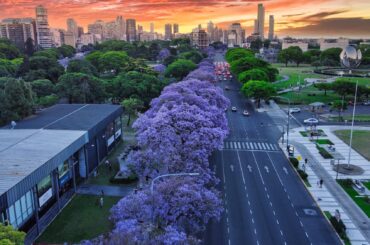
The best time to visit Buenos Aires?
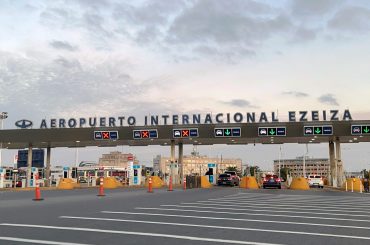
How get from Ezeiza (EZE) airport to Buenos Aires city
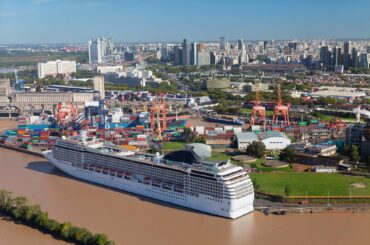
Buenos Aires Cruise Port: Everything you need to know
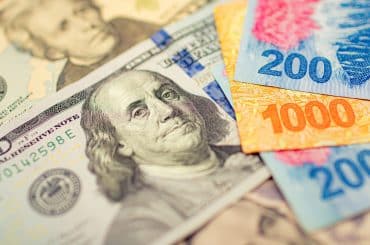
Tourist foreign dollar exchange rate
We wrote briefly on Friday about the national airlines and their reliability. You wrote that you will also travel to Salta in September. I have noticed that there are currently violent strikes north of Salta in the Prince Jujuy. How do you assess the situation? Has this been done by September/October or is it problematic to travel there? We want to go there. To Pumamarca, Tilcara and Humahuaca. How do you see it?
Greetings Robert
Write A Comment Cancel Reply
Save my name, email, and website in this browser for the next time I comment.
- Airport Transfer
- Book Tango Show
- Follow Instagram

- Top Attractions
- See a Tango Show
- Best Day Trips
- Food and Drinks
- Hidden Secrets
- Itineraries and Walks
- Football Match tickets
- Travel Checklist
- Airports and airlines
- Exchange money
- Best Time to Visit
- Get a Sim Card
- Best Hotels
- Where to Stay
- Public transport and taxi
- History and Facts
- Cycling in Buenos Aires
- Christmas and New Year
- Patagonia travel tips
Argentina’s Wild Economy & Current Exchange Rates
Argentina has several different currency exchange rates, which can be confusing for visitors.
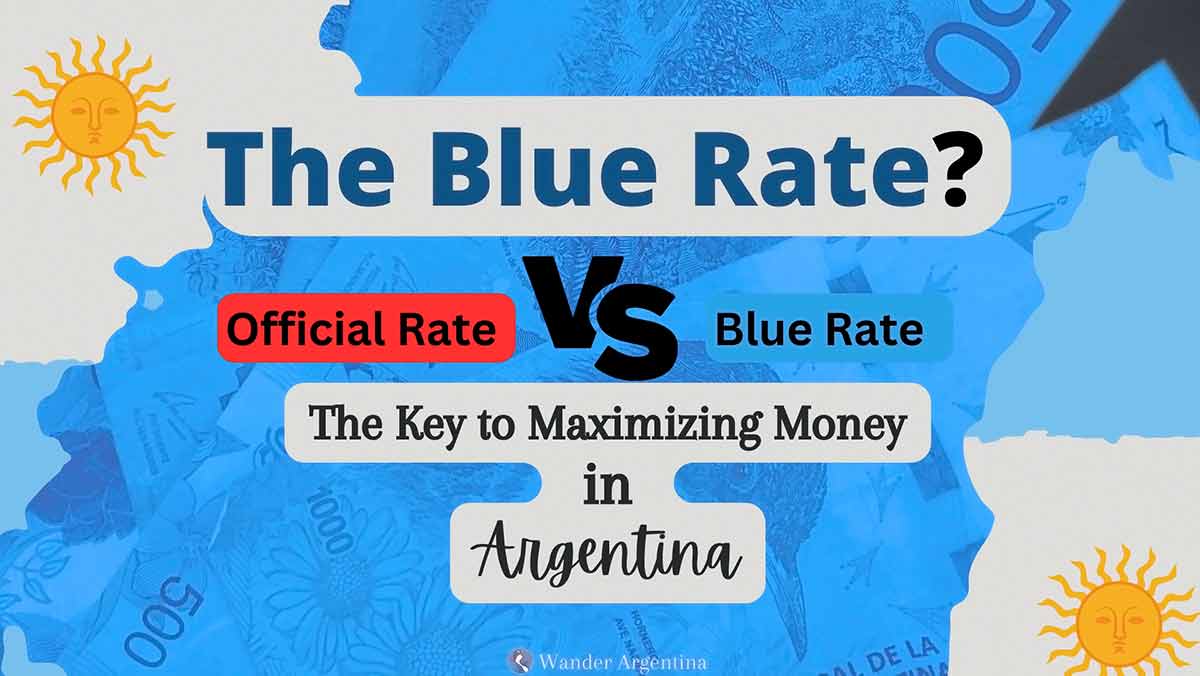
If you’re wondering what the ‘Blue Dollar’ is and why it even exists, read this post and check our currency converter below to save yourself a lot of money while visiting Argentina.
Table of Contents
Argentina’s Economy: A Brief History
Argentina enjoyed an abundant beginning to the 19th century and was one of the world’s richest countries only one hundred years ago.
The French coined the phrase, ‘rich as an Argentine’ after seeing their lavish spending habits in Europe during the Belle Époque.
Argentina still has a wealth of natural resources and fertile land.
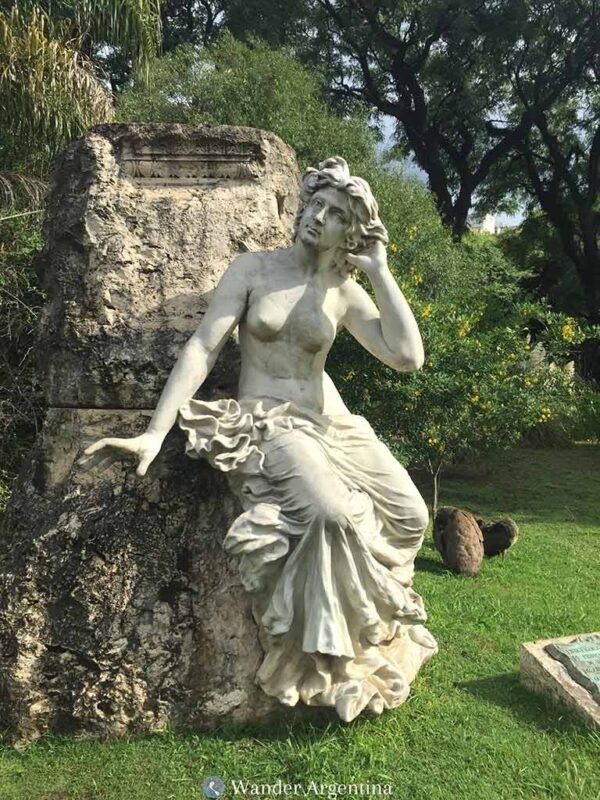
The riches of yore are most evident in the capital, Buenos Aires.
There are beautifully landscaped parks and plazas, buildings decked out in marble and brass, and elegant public statues such as the Nereids Fountain dotted all over the city.
The Argentine Paradox
The previous wealth of Argentina is most evident in some of the city’s biggest tourist attractions such as Avenida de Mayo’s Tortoni Cafe and Recoleta Cemetery , where departed Argentines forever rest in the luxury of pricey mausoleums.
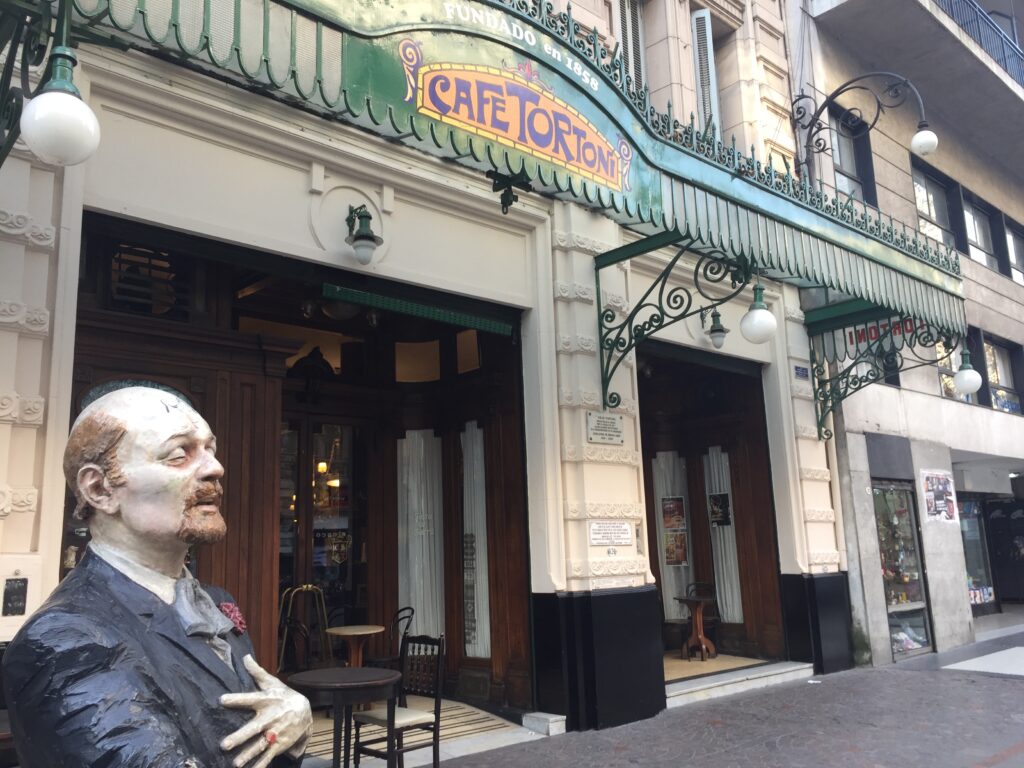
Since the golden days, a chaotic political landscape, a succession of military takeovers, corruption and free-for-all privatization in the 80s and 90s wreaked havoc on the economy.
Economists refer to the stark economic decline in Argentina as the ‘Argentine Paradox.’
How did a resource-rich country that had a similar GDP to Canada one hundred years ago fall so far?
It’s no mystery for those who live in Argentina (the unorthodox economic model for one thing!) nonetheless, countless essays have been written on the topic.
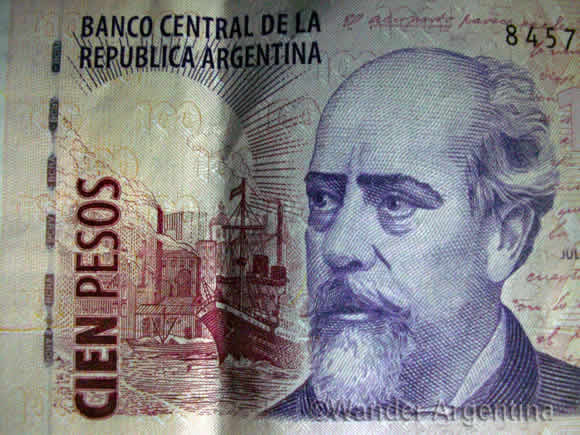
The Argentine Paradox is often contrasted with the Japanese Paradox.
As far as Argentina has fallen, Japan has risen. Japan experienced such economic growth that it grew to become the third-largest economy in the world in the same time frame, despite a scarcity of natural resources.
Before the economic collapse at the turn of the millennium, Argentina was a more expensive destination than Europe.
Argentina’s devastating 2001 economic crisis and the resulting devaluation of the peso meant lost savings for citizens who kept their money in the bank.
The country’s economic situation stabilized somewhat for citizens the decade after the turn-of-the-21st century crisis.
Employment increased and poverty rates fell for several years, but Argentina is on a constant roller coaster ride and the future is always uncertain.
One positive turn for the economy was that Argentina’s tourism industry has grown since 2021, as travelers discovered they could get more mileage for their moolah.
Since that time, Argentina has gained a reputation as an extremely affordable destination to visit and even to reside, attracting digital nomads, and self-described ‘expats.’
With destinations such as elegant Buenos Aires and the Alpine town of Bariloche , some liken it to visiting Europe on a South American budget.
Now those traveling to Argentina with foreign currency will still find it affordable ( Buenos Aires’ fabulous subway still only costs $.30 tops) but the future is uncertain as always.
Recent changes are shaking things up, and budget adjustments are making it tough for locals.
Foreign visitors are noticing higher costs too.
A Little History of the ‘Blue Dollar’
Throughout Argentina’s history, the currency has seen significant fluctuations, largely influenced by political shifts and economic policies.
Under Cristina Kirchner’s presidency from 2007-2015 strict currency controls were introduced, leading to a substantial black market for dollars.
During these years, Argentina was popular with travelers who came for the six-dollar steak and Malbec dinners.
Things get confusing for those using old guidebooks because when Mauricio Macri’s became president in 2015, he stabilized the currency flow and largely diminished the use of the black market by foreigners.
Prices inched upward during the few years the currency market was normalized, until September 2019, when the government reinstated its ‘creative’ currency controls amidst dwindling foreign exchange reserves.
This paved the way for the return of the Peronist government, with Cristina Kirchner serving as Vice President this time.
Once again, this change led to a divergence between the official bank exchange rate and the black market rate, commonly referred to as the ‘ Dólar Blue ‘ (Blue Dollar) rate.
To illustrate the huge breach: in January 2021, the official rate for one U.S. dollar stood at approximately AR$86, while the parallel market offered around AR$151.
This spread escalated by January 2022, with the official rate at $104 and the parallel market soaring to $204.
Those numbers will be surprising for newcomers who learn that the ‘Blue Dollar’ is now worth over AR$1000 per dollar.

Argentina’s Different Exchange Rates Today
Visitors will still want to leverage the Blue Dollar rate to optimize currency value.
The Blue or Black market dollar is listed in local newspapers as the ‘ dólar informal ‘ (informal dollar) while the ‘ dólar oficial ‘ (official dollar) is the official bank rate.
To confuse things further, there are a bunch of other exchange rates listed in newspapers.
One such exchange rate is the ‘Soy dollar’ that gives soybean farmers a favorable rate to boost the agricultural sector.
The ‘Qatar dollar’ was tied to the rate for those who traveled to view Argentina play the 2022 World Cup.
The “Netflix dollar’ is used to describe an inflated exchange rate tied to various taxes applied to foreign streaming services.
Less colloquial is ‘ contando con liquidación ‘ or the CCL rate, an investment rate of securities in pesos sold for dollars in foreign markets.
Money transfer services use this mechanism, thus they can often offer better rates than the Blue Dollar.
Whatever you do: don’t exchange money in a bank because that is where you’ll get the lowest rate.
¡Blue Dollar Still A Thing!
With Argentina’s ‘creative’ currency controls, the situation is that travelers can save money if they come to Argentina with U.S. dollars in cash, or even by using a money transfer service , which often offers a superior rate, to send money from a bank account at home.
The black market for the ‘Blue Dollars’ remains robust, as Argentineans don’t trust their currency and prefer to save dollars.
The Blue Dollar is still also thing for visitors who want to take advantage of the rate.
Not to mention cash is needed daily.
Many family-owned businesses want to avoid foreign credit card purchases due to fees on their end.
It is common for smaller stores to offer an additional discount for cash or charge a 10-15% surcharge on foreign cards.
To exchange dollars on the black market you need crisp 100 bills (usually dollars, but Euros and Reales are dealt on the black market too).
Outside of Buenos Aires, it may be more difficult to find money transfer services, especially in small towns, so it pays to carry some USD for backup.
Travelers may find they can even get more pesos in exchange for their US dollars in more remote areas of the country because people in the provinces have a harder time finding dollars to purchase.
On the other hand, it can sometimes be difficult to find a place to quickly change money in a pinch while traveling around the country, so make sure to have various options to access your money.
Carrying USD or Euros to exchange for pesos is also a good way to avoid, not just a bad official and lower MEP exchange rate, but also steep ATM fees, which run about a minimum of US$8 per withdrawal in Argentina, for any amount.
Understandably some don’t feel comfortable carrying lots of cash, but even those who don’t bring in foreign currency will be carrying wads of cash in Argentina, as the bill denominations are small.
Those used to using credit cards or Apple Pay for every purchase will have to adjust.
A light travel jacket with hidden inside pockets is a great option to conceal your cash.
→ To read about exchanging money on the street in the Buenos Aires black market, read Black Market Money Exchange & Other Hustles on Florida Street
Live Currency Converter
Try our currency converter to compare Argentina’s official, Blue Dollar rate and Western Union rate all in one place.
Input the number of dollars you want to exchange and press return to see the real live rate:
Keep in mind that these are the rates before ATM, Western Union and ‘ arbolito ‘ (money changing) fees.
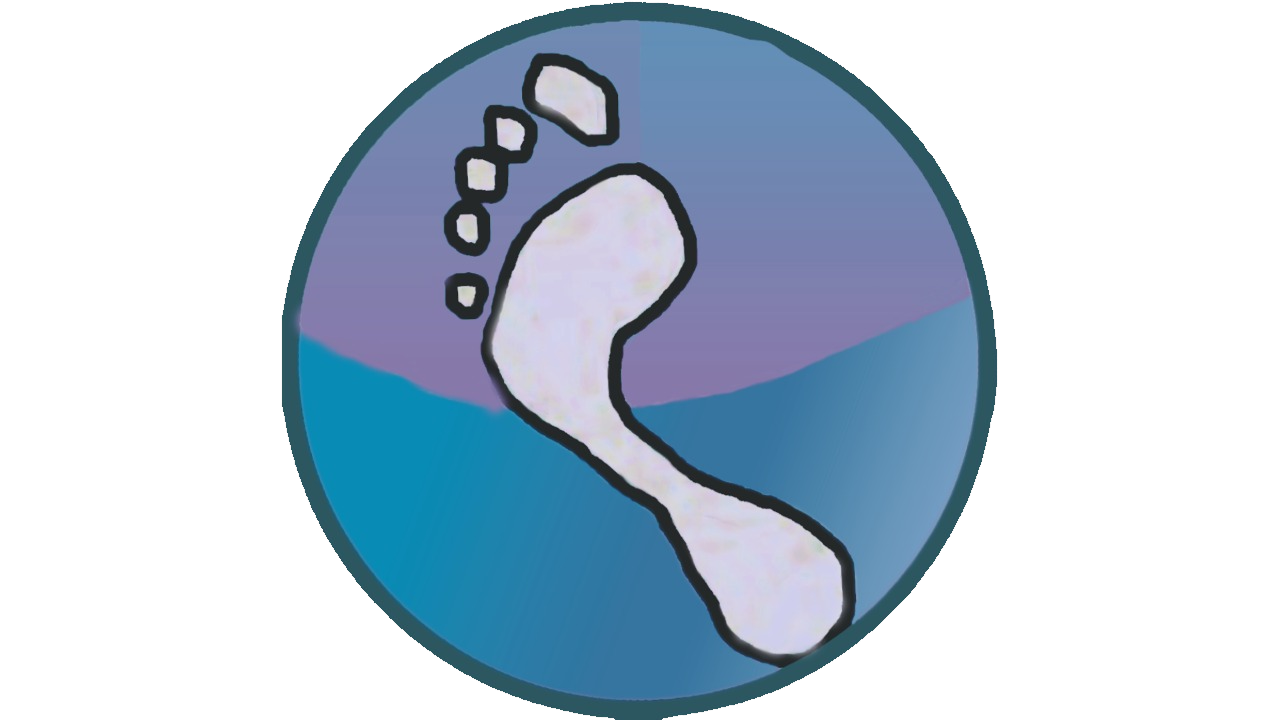
Input a US$ amount
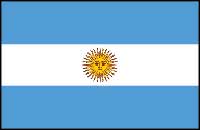
OFFICIAL RATE
US$ 1 = AR$
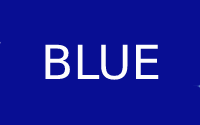
WESTERN UNION
MEP Credit Card/Debit Card Rate
The MEP (‘Electronic Payment Market’ in its Spanish acronym) rate, introduced in late 2022 to boost use of traditional banking for visitors, offers a more favorable exchange rate using a debit or credit card.
It also doesn’t include American Express debit or credit cards, so leave that card at home.
As of 2024, the MEP rate closely mirrors the Blue Dollar rate or lags slightly behind.
CASH / BLUE DOLLARS • Visitors, just like most Argentines, will be unable to get their hands on any foreign currency in Argentina, unless they use the black market. They can also sell ‘Blue Dollars’ at a favorable rate.
CREDIT CARD RATES • A rate called the MEP rate was created in late 2022, allowing foreigners to receive the MEP rate for Mastercard and Visa debit and credit cards, which tends to be 3-10% less than the Blue rate.
ATMs • ATMs only remit Argentine pesos, at the MEP rate for most foreign cards (American Express is an exception) but have low withdrawal amounts and fees of around 20-30%
Read this post to figure out how to handle stacks of cash , and why you should bring ‘Big Headed Benjamins’ to exchange.
Relying on both the Blue Dollar or a money transfer service is better than ATMs. Most travelers avoid using ATMs because of their offensively high fees.
Argentina’s 2024 Currency Rollercoaster
Now that Javier Millie is president, and taking a chainsaw to Argentina’s spending, the spread between the official and blue dollar is shrinking to around 15%, although it varies.
In theory, this means Argentineans have more purchasing power, but rampant inflation disrupts that notion.
Javier Milei intends to dollarize Argentina’s economy, which involves adopting the US dollar in place of the Argentine peso. His long-term strategy aims to stabilize the economy to combat inflation and encourage investment.
Argentina tried this policy in the early 1990s, after a similar period of recession and hyperinflation when the government fixed the peso’s exchange rate at one-to-one with the US dollar.
This move initially created a rare period of prosperity and Argentines gained the ability to travel abroad more affordably.
But the fixed exchange rate artificially inflated the peso’s value, creating an economic ‘fiction’ that collapsed under the weight of reality, which caused the economic crash of 2001.
Milei’s current push for full dollarization is seen as a bold measure to normalize the economy and build confidence in Argentina, although many feel it is a risky policy, as the country’s history illustrates.
Argentina not only has incredible landscapes and exciting cities but also one of the world’s most dynamic currency markets.
Make sure to keep abreast of the situation because exchange rates fluctuate every day and policies can change at any time.
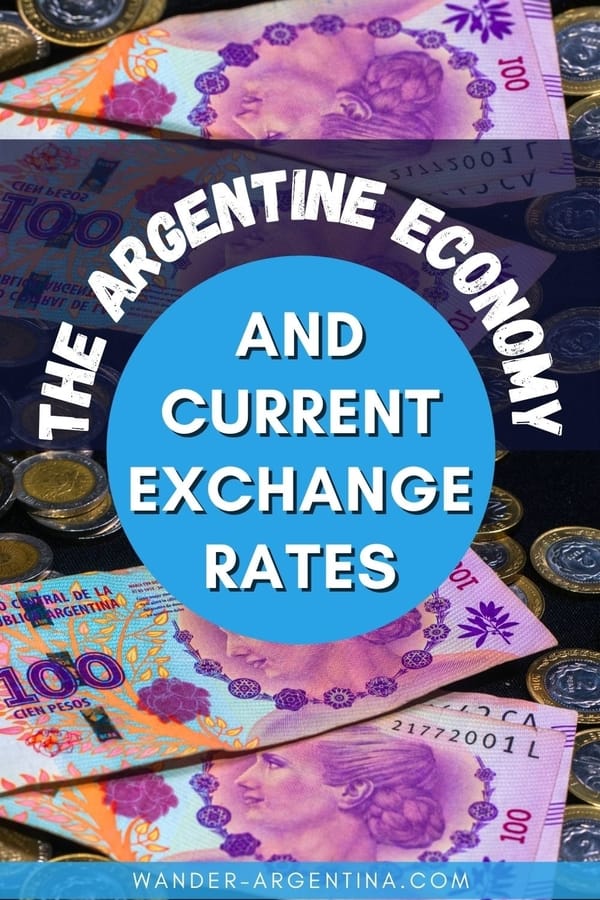
→ To read about transferring money from your home bank account if you don’t have cash, read Money Transfers to Argentina
Our Services
Privacy Policy
Airport Pickup
Attend a Soccer Game
Book Accommodation
Driving & Car Rental
©Wander Argentina 2024
All rights reserved.
As Amazon Associates, Wander Argentina earns from qualifying purchases
- New? Start Here
- Philippines
- Dominican Republic
- Expat Insurance
- Visas and Immigration
- Travel Essentials
- Travel Medical Insurance
- Expat Insights Newsletter
- Overseas Health Insurance
- International Moving Costs
- Financial Independence
- Philippines Visa Help
- Colombia Visa Help
Exchanging Money in Argentina [2024 Update]: USD/EUR/ARS Exchange Cheat Sheet
Need to change US dollars to Argentine Pesos? Get the latest tips with up to date info and rates for exchanging currency in Argentina in 2024. From official rates to blue market exchange, using black market money changers to using ATMs, get the latest tips to convert USD/EUR to ARS with confidence. minutes
Mins Reading Time
About the author
Hi, I'm Marco Sison . I worked in finance for Fortune 50 companies before retiring early at 41 years old. I have been an expat for over 10 years, living in over 50 countries to show you the best ways to save, invest, and live in amazing countries outside the USA. I am a trusted resource on personal finance and overseas retirement for US News & World Reports, HuffPost, MSN Money, USA Today, ABC Network, Yahoo Finance, Association of MBAs, the iTunes documentary Seeking FIRE, and the Amazon Best-Seller- Abroad: Expats That Thrive .
QUICK SUMMARY- CHANGING MONEY IN ARGENTINA
- Foreigners get the best rates at Western Union or local Cuevas.
- Visa and Mastercard rates are ~12% less than Western Union
- There is a “Black Market” for money in Argentina with a parallel rate nearly 50% more than the official government rate.
- Currency rates have swung wildly since the Dec 2023 currency devaluation.
- Cryptocurrency adoption increasing for transactions.
- Using ATMs are still not recommended due to low withdrawal limits and high fees.
- Smaller businesses have started charging 10% to 30% more for credit card transactions,
Understanding the Currency Situation in Argentina
When we first moved to Argentina , we had to pay our monthly rent by carrying grocery bags full of cash to an illegal money exchanger known as a “cueva” (the literal translation of cave in Spanish). As I walked back to our apartment with the most money I’ve ever carried in my life, I felt nervous. I constantly looked over my shoulder, my eyes alert, scanning back and forth whenever someone walked near me.
Little did I know that this anxious 10-minute walk was just the beginning of a chaotic year.
QUICK TIP: You can compare the rates between Western Union, Crypto, Visa, and Mastercard here.
This post may contain affiliate links. I may get a commission if you purchase something using my link. Please note, there is NO ADDITIONAL COST to you. For more information, please see my disclosure .
6 Quick Tips To Prepare For A Move To Argentina
TIP 1. Use Western Union to get more pesos- Western Union is still the best way to change money in Argentina. As an added bonus, you get a $20 Amazon Card and Free transfer fees for using our sign up link .
TIP 2. Argentina is another country that requires an onward ticket- Be prepared to show a departure flight or a return ticket. You can get a cheap onward travel ticket $16 here.
TIP 3. Your home insurance will not cover you in Argentina- Protect your health with international health coverage that costs less than what you would pay in the United States.
TIP 4. Get FREE quotes to save on moving costs- International moves can get expensive. You can save hundreds of dollars using this form to get professional international moving companies to compete for your business.
TIP 5. Keep a permanent address with a travel mailbox- Keep an address in your home country to receive important mail from getting lost. A virtual travel mailbox ensures you don’t lose an important tax return, bank statement, credit card, or government document in the mail.
TIP 6. Pick up some Spanish Skills- Only 6% of locals speak English. You’ll make life in Argentina easier by knowing more than “Hola.” Get a free 7-day Spanish language crash course your transition here easier.
2024 Currency Devaluation
On Dec 13, 2023, less than a couple weeks before Christmas, newly-elected President Milei made a bold move by significantly devaluing the Argentine Peso (ARS) by 50%, from 366 to 800 pesos per dollar. Families woke up that morning to find that the cost of their kids’ Christmas gifts had doubled overnight.
We have been living in Buenos Aires for several months now, and even in the short time we have been here, the cost of living volatility is shocking. It is one thing to read about Argentina’s inflation hitting 211% ; it’s another thing to watch your grocery bill double in just a few months.
And I begrudgingly complain about prices because I fully grasp my position of privilege as an expat. My monthly income is in a stable currency like the US dollar. If foreigners complain about prices, it is difficult to imagine how locals cope with the country’s economic crisis.
The Impact of Inflation on Currency Markets
While one of South America’s largest economies and richest countries, Argentina has been mired in a battle with inflation since the 1980s.
When a country experiences high inflation, the value of its currency tends to drop as the currency’s purchasing power of the currency decreases. This drop makes the currency less attractive to foreign investors.
In reaction, the government adopted unorthodox currency restrictions to artificially prop up the value of the Argentine Peso.
The relationship between inflation, monetary policy, and rate of exchange is complex, and the details are way past the point of this article.
It is sufficient to say that the government’s currency controls did not work as intended.
As the peso’s value plunged, Argentines turned toward foreign currencies, particularly the US dollar and the Euro, as safe havens for their money.
Impact of Peso Devaluation On Expats
For expatriates living in Argentina, the peso’s devaluation has a two-sided effect. On one hand, if expats earn their income in a stronger foreign currency, like USD or EUR, they might find their financial power increases as the peso loses value. Everything from dining out and tourist attractions to gym memberships can become relatively cheaper when you use a stronger currency in the country.
On the flip side, the prices of local goods are currently rising faster than the exchange rate. So even when I walk out of a money changer with more stacks of peso notes, my purchasing power is dropping. This effect makes maximizing your rates when exchanging money in Argentina doubly important.
Forget the Macroeconomics; it’s about getting the most bang for your buck.
Official Vs. Informal Exchange Rates
The blue market explained.
In Argentina, the ‘Blue Dollar Rate’ refers to the unofficial exchange rate that operates parallel to the official market. It gets its name from the blue strip in the newer one-hundred-dollar bills.
Also referred to as ‘dolar blue,’ you can exchange USD or EUR for ARS at more favorable rates than those offered by banks and authorized exchange offices. Until the December 2023 devaluation, you could get nearly double the amount of pesos by finding someplace willing to trade at the black market rate.
While the Argentine government does not sanction the black exchange rate, it is a widely used method of currency exchange due to the significantly better rates it can offer. However, it also comes with risks since it’s unregulated and lacks official protection. The rates here can fluctuate widely, influenced by the economic policies, market demand, and availability of foreign currencies.
While the latest devaluation has shrunk the gap between the official and unofficial rates, the Blue Market can still help you save on living expenses.
As of this writing, daily rates have been going crazy. I changed a $100 bill at my local cueva on Jan 4th and received 96,000 ARS.
Today, I received an email from Western Union offering 128,900 ARS—an increase of 34% in just two weeks.
The 5 Best Ways to Exchange US Dollars Pesos in Argentina in 2024
Using western union to get argentine pesos.
I was puzzled when a fellow expat first told me that I should use Western Union. Western Union is one of the biggest rip-offs in the US.
I can transfer money to friends in the US using PayPal, Revolut, or Venmo for free or almost free. The idea of paying Western Union $15 ($5 with a discount) in transfer fees is ludicrous.
But in Argentina, Western Union is a go-to choice for many expats because they use the blue rate, and WU has loads of branches in all major cities.
The process on their website or app is straightforward. You can send money from your USD account, debit or credit card, and receive Argentine pesos in cash.
Setting up an account is free, and you can pick up your money at any WU branch nationwide. You can use my referral link for a free $20 Amazon gift card to sign up.
INSIDER TIP: Pick A Favorite Branch – Western Union does have drawbacks. The biggest pain in the ass is that not every branch carries enough cash. Additionally, most Western Unions have ridiculously long lines. Few things are more frustrating than waiting an hour in line only to find out they ran out of cash.
My advice is to make friends with the employees at your favorite branch. At mine, we are on a first-name basis, and I can send her a WhatsApp asking if she has enough money and check on how busy she is before I waste my time. Shout out to Volieta!
Exchanging USD and EUR Bills for Pesos At Money Changers
Bank money changers are the most commonly used method of changing money into peso. But in Argentina, bank FOREX counters offer the worst rates.
The foreign exchange counter at the Banco La Nacion branch at Ezeiza International Airport (EZE) is one of the first things foreign tourists see after getting off an airplane. I am willing to bet that the bank airport counter snags many unsuspecting tourists into forfeiting their US dollars or Euros at a terrible rate.
As you can deduce from the name, all official exchange offices will only convert to Argentine pesos at the official exchange rate (currently 50% less than the informal rate).
Black Market Money Changers
To get the black market rate look for informal currency exchange houses, called “casas de cambio” in Spanish or informally as “cuevas.”
You can find cambios in nearly every neighborhood in Buenos Aires. Each cambios sets their own rates, but all use a competitive rate close to the blue dolar, and consistently much higher than you will find at any bank.
Calle Florida, a pedestrian-only street in downtown Buenos Aires, is known to have loads of underground exchange houses (cuevas). Just listen for touts, known as arbolitos, calling out “cambio, cambio” to people who walk past.
Arbolitos would lead you to unofficial currency exchange houses, where you can change dollars for pesos at a more advantageous rate.
Personally, I stick with cuevas in neighborhoods frequented by expats (Palermo, Recoleta, Belgrano) or ones recommended by your Airbnb host, friend, or trusted local contacts.
Cambios accept most foreign currencies, but the highest blue market rate requires new, crisp, undamaged banknotes. Expect a lower rate if there is a tear, writing, or stains. Crisp, unmarked USD and EUR bills are preferred and fetch the best rates. Older, damaged, or marked bills may be accepted, but potentially at lower rates.
.stk-1823113{padding-left:15px !important;margin-bottom:10px !important;margin-left:15px !important} .stk-1714c11{padding-left:15px !important;margin-bottom:10px !important;margin-left:15px !important}.stk-1714c11 .stk--svg-wrapper .stk--inner-svg svg:last-child,.stk-1714c11 .stk--svg-wrapper .stk--inner-svg svg:last-child :is(g,path,rect,polygon,ellipse){fill:var(--stk-global-color-64421,#c5001a) !important} .stk-fca9845{margin-bottom:10px !important} Always count your pesos before leaving, and don’t hesitate to check the bills for authenticity.
INSIDER TIP: Secure Your Cash- When you need to exchange large amounts of cash, like changing money to pay rent, it doesn’t hurt to be more cautious. Argentina doesn’t have the safety issues of Colombia or Brazil, but carrying large bags filled with cash still warrants caution. I usually take an Uber straight home rather than walk 20 minutes with huge sums of cash in a backpack.
Using Credit Cards: Convenience Over Savings
Using credit cards in Argentina is a relatively new option for expats. Historically, all foreign credit and debit cards would convert your peso purchases to your home country’s currency using the official rate. This meant foreigners always paid cash and only used foreign credit cards if they were okay with getting a lower currency conversion.
However, on December 15, 2022, Argentina introduced the MEP rate (Medio Electrónico de Pagos) or Tourist Exchange Rate, specifically for credit card companies. Now, foreigners using their credit, debit, or prepaid cards in Argentina receive more favorable exchange rates.
The MEP rate only applies to purchases (excludes cash advances) using foreign cards. Expats with Argentina bank cards are stuck with the official rate.
While the MEP rate was still slightly less than the Blue Dollar rate (currently, MEP is 3% less), I use my visa card whenever possible. Credit cards offer a better balance of security and convenience. I’m not carrying a massive wad of bills to pay for dinner, and I still get my credit card points.
However, while most grocery stores, large restaurants, and international retail shops don’t care if you use a credit card, in the last couple of months, most small businesses started charging me an extra 10% to 30% more for credit card transactions.
INSIDER TIP: Using Your Credit Card In Argentina- Visa will post the amount of your purchase (plus any foreign transaction fees) to your account using the current exchange rate. However, Mastercard and American Express transactions initially post using the lower official rate, then automatically refund you the difference 4-5 business days later.
Using Cryptocurrency To Exchange Money In Argentina
With a self-proclaimed “Anarcho-Capitalist” president looking to shake up Argentina’s ever-evolving financial crisis, the cryptocurrency scene in Argentina changes quickly, even by crypto standards.
Just last week, Argentina’s first rental contract was signed using crypto coins as the official currency.
INSIDER TIP: Bitcoin- For reasons unknown to me, Bitcoin is not widely accepted here. Most transactions are denominated in USDT. You can use this link to trade USDT using Binance and get your first trade free.
Rather than speculate on what can happen in the future, I’ll focus on the cryptocurrency exchange process.
As of this writing, you won’t be able to pay for any good or service using crypto. However, you have three choices for exchanging crypto for Argentina pesos.
1) Use a cueva or cambio- Not all take crypto, but many do. I use Flash Palermo because they are conveniently located. They don’t have the best rates. They charge a 2% commission, plus make some money on the exchange rate.
2) Use P2P – There are several Whatsapp groups where expats and digital nomads trade with each other. Usually, you get mid-market rates, and it’s a win/win as you both cut out the middleman.
3) Use The Wapu App- The most common non-cash way locals pay for things at shops and markets is by using a service called Mercado Pago. Mercado Pago is Latin America’s Venmo if every small business in the US accepted Venmo instead of credit cards. However, the HUGE downer is a Mercado Pago account requires a DNI (basically an Argentina Social Security Number), which isn’t available to non-residents.
Wapu allows you to transfer USDT into your wallet, then use the app instead of Mercado Pago. So whenever a merchant asks you to scan their Mercado Pago QR code, you scan the same code using Wapu, and boom, you just used cryptocurrency to buy empanadas.
Getting US Dollars From Uruguay
A popular tip for expats needing additional US dollars while in Argentina is to venture to Colonia del Sacramento, Uruguay, a charming and historic getaway just a ferry ride away. Beyond its scenic views and cobbled streets, Uruguayan ATMs dispense USD notes, providing an alternative method for obtaining the coveted currency.
INSIDER TIP: ATM Fees- One tricky thing is that Banco Republica didn’t charge me a separate ATM fee. Instead, they combined my withdrawal and ATM free into a single transaction. If you use Schwab, Fidelity, or a similar bank that automatically refunds your foreign ATM fees, getting your $5 back requires a phone call.
3 Worst Ways To Change USD Dollars to Argentina Pesos in 2024
Using an atm in argentina.
Using my Schwab ATM card is my go-to method of exchanging money in nearly every country. Schwab refunds me for any foreign bank fees and gives me a favorable exchange rate when pulling out money.
However, my personal experience is that ATM bank machines are not a practical option in Argentina.
I checked 4 different cash machines at different banks, and the most I could withdraw was 25,000 pesos with a super high 9,000 pesos ATM fee.
This translates to only being allowed to withdraw $20 USD at a time and getting hit with a $8 fee each time.
If you find yourself in a pinch and need to access cash quickly, ATM machines in Argentina are available, but they should be your last resort.
PayPal and XOOM- Western Union Alternatives
Paypal is a stalwart in the money transfer industry. I imagine 99% of you guys out there already have a PayPal account. XOOM operates as a PayPal service for swift and secure digital money transfers using Cobroexpress as a partner in Argentina. Expats can send US dollars using XOOM and pick them up as Argentine pesos at a Cobraexpress.
Cobraexpress operates convenient cash pickup locations in most cities, including blanket coverage in Buenos Aires.
However, unless you are desperate or XOOM’s integration with PayPal is a compelling reason, XOOM is a worse deal than Western Union. While Cobraexpress does not charge a pickup fee, XOOM makes money on the exchange rate and the transfer fee.
Transfer USD Using Wise To Get ARS
I didn’t have much luck finding any Cambios that would accept Wise (formally known as TransferWise). I only found one place, Reby Rate in the Palermo Soho, offering to exchange my Wise USD transfer into ARS with an additional 7% commission.
Additionally, Wise transfers are converted using the official exchange rates and not the Blue Market rates, so you’ll get crappier rates and a high commission. Why do you want to use Wise? Do you hate money?
FAQs: Argentina Currency Exchange System
Can you use us dollars day-to-day.
While it’s possible to use US dollars for transactions in Argentina, particularly in tourist-heavy areas, it’s not the norm. Some larger grocery stores and touristy restaurants will allow you to pay in USD or EUR but charge a horrific exchange rate that is even lower than the actual rate.
How Do I Get the Best Exchange Rate in Argentina?
The rates have been all over the board recently, but the best exchange rates in Argentina are either via Western Union or exchanging money in cuevas using the blue dollar rate. Both options are much better compared to the official bank rate.
Is it safe to use online platforms like Western Union in Argentina?
Western Union in Argentina is considered safe. A few things to ensure:
- Double-check the spelling of your name as the “Recipient” matches the name on your passport.
- Confirm that Western Union has enough cash. You may need to break up large amounts into two transactions.
- Pay attention when the teller does their count. Western Union is legit and isn’t a scam, but tellers are humans and can make mistakes.
What should I know about Cuevas and Arbolitos?
Cuevas and arbolitos are informal and unregulated currency exchangers. While widely used, they’re unofficial and come with some risks. Get a local’s recommendations for trusted cuevas to minimize the risk.
Even with a “trusted” Cueva, I like to use the “trust but verify” approach. After the teller takes out the stacks of money from their lock drawer or safe, they run the bills through an electronic counter. It’s easy enough to ensure the electronic counter matches the amount I expect to receive.
Will my foreign credit card work everywhere in Argentina?
Foreign credit cards should work in larger cities across Argentina. However, even in Buenos Aires, I carry cash, as some shops will say their machine is “broken” or that their service is “down.” Other merchants will charge an additional 10-30% to use a credit card.
Additionally tips before using your credit card in Argentina:
- Inform Your Bank: Before traveling, tell your bank to expect foreign transactions to avoid any security blocks on your card.
- Check For Fees: Some cards charge for international use. It’s always best to be aware of additional fees to avoid surprises on your statement.
- Cash Advances: Using your credit card for a cash advance not only hits you with an upfront fee and higher interest rate, but you will also get the lower official exchange rate.
- Back-Up Plan: Even with the prevalence of credit cards, always have some cash as a backup, particularly in rural areas or when shopping at smaller stores or local restaurants that will charge you an extra fee to use your card.
We moved the comments to the New Expat Forums
Hello Marco, could you suggest a WhatsApp group that I can join so that I can exchange my USD with other expats or nomads for ARS(Argentina Peso)?
Also, do you have any cambios or cuevas contacts that is trustworthy for exchanging USD to Argentina Pesos??
Hi Frank, Currently, Western Union is the best way to exchange money in Argentina . I just checked with my trusted cueva in Palermo Hollywood and they are offering lower rates for USD to ARS conversion. You can check out the video here to find my recommended Western Union branches and get a $20 gift card from Amazon.
For WhatsApp groups to exchange money , I just finished an article with links to my recommended groups.
Hi, That's me. I'm Marco Sison . I am a survivor of the corporate rat race. I started Nomad FIRE to show you an alternative to the stress and grind of 70-hour weeks to pay off a mortgage, student loans, and countless bills. After getting laid off in 2015, I said screw it all and retired early at 41 years old. I have traveled the last eight years to over 50 countries to show you the best ways to save, invest , and live in amazing countries for 70% less cost than the US. I have been featured in: US News & World Reports, HuffPost, MSN Money, USA Today, ABC Network, Yahoo Finance, Association of MBAs, the iTunes documentary Seeking FIRE, and the Amazon Best-Seller, Abroad: Expats That Thrive . [ view press... ]
Session expired
Please log in again. The login page will open in a new tab. After logging in you can close it and return to this page.
StarTribune
Buenos aires is incredibly cheap for tourists right now — but will it last.
Buenos Aires was in the throes of Southern Hemisphere springtime, with bold, budding purple jacaranda trees lining the boulevards. Genial locals filled up the sidewalks and plazas and flocked to countless city parks. Meanwhile, Taylor Swift was gearing up for her first concerts ever in Argentina, and the media and fans were in a frenzy.
But what I couldn't get over during an early November visit was how affordable everything was, at least for us tourists — a fact that concealed problems under the surface for Argentina.
Take our spacious corner king suite in the full-service boutique hotel Mio , with a big wooden soaking tub and wraparound floor-to-ceiling windows revealing the Euro-style streetscape. I reserved it online at $386 a night, but it later showed up on my credit card statement at $156.
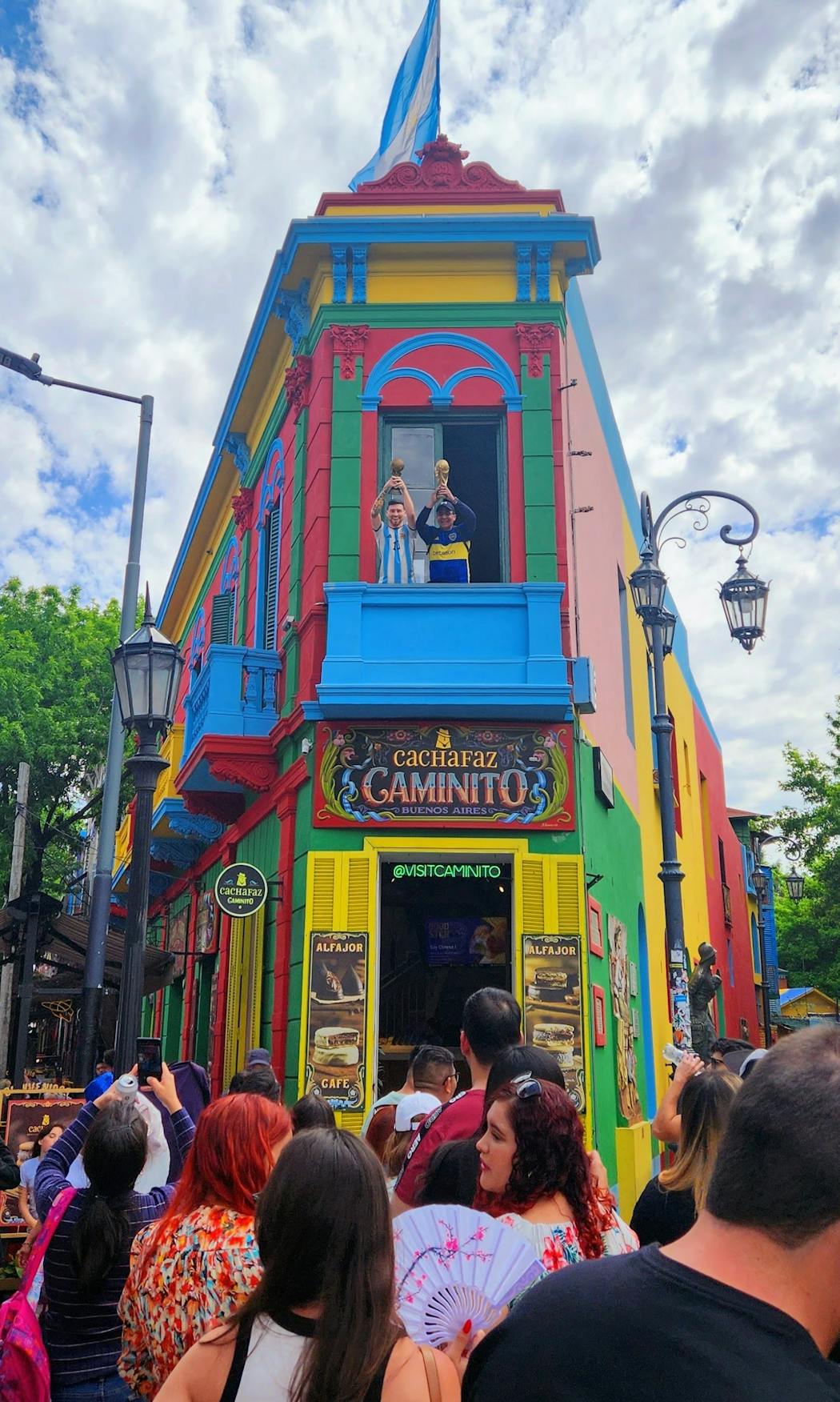
Or an Argentine parilla (steakhouse) spread of juicy sirloin, salmon and frites with rice, pumpkin, a dollop of fried cheese, big bottles of beer and wine, and even more veggies for our baby. Using Argentine pesos I had wired to myself, the entire feast on the sidewalk patio at cash-only Las Cabras set me back about U.S. $38.
A fine leather handbag at Nimes, the kind of boutique you ring a bell to enter? Officially $350, but $108 for my partner.
Rides around the city via Uber, which is unauthorized but tolerated in Buenos Aires? $3 to $5 plus tips.
In short, Buenos Aires was downright cheap for us, even as Argentina was suffering under a whopping 140% inflation rate on the eve of a consequential presidential election. It may change very soon, but it was a dream scenario for any traveler accustomed to sticker shock abroad: a super strong U.S. dollar, combined with a special exchange rate just for tourists.
And to think that we owed this discovery to Taylor Swift.
The tourist dollar
When my partner, Sabrina, regretted missing Taylor's Eras Tour at home, I thought, "Well, where else is she playing? " International options included Mexico City (been there), Sao Paulo and Buenos Aires — the latter at legendary El Monumental, one of the largest soccer stadiums in the Americas. Swift was a good excuse to cross the so-called "Paris of the South" off our wish list.
Other reasons? The U.S. State Department rates Argentina a Level 1 — safer than most of Western Europe, and among the safest places in Latin America, a consideration when crossing the globe with an 11-month-old.

Sabrina's resale concert ticket on StubHub was not cheap, however, nor was our flight, because we did not buy them with pesos. (I'll explain in a bit.) The 10-hour final leg was particularly grueling with our sleeping 23-pound daughter on my lap. Bleary-eyed, the first thing I saw in baggage claim was a Visa ad promising "a special dollar rate for foreigners."
Money in Argentina is complicated, but because of a long-simmering economic crisis, there are many different exchange rates. One dollar would officially buy us about 350 pesos, but visitors have long been able to wire money or even buy pesos on the black market at much higher rates. So one year ago, the government made it legal and instituted the " tourist dollar " (also called the "MEP" dollar). Since then, if you pay for things in pesos with a foreign Visa or Mastercard, you'll get a wildly favorable exchange rate — about 860 pesos to the dollar while we were there, and more than 940 today.
It was all very confusing and required more economics reading than I usually do for a vacation. Bottom line: Our bills came to about a third of what we might have expected, leaving plenty of pesos for tips. Hopefully we helped stimulate the tourism economy, but it made us wonder if the tourist dollar was good or bad for Argentina.
Infinite city
Theoretical physics gives us the concept of the infinite universe, where everything imaginable goes on and on, well, forever. That was how I felt exploring the barrios of the ninth-largest city in the Americas, with 3 million inhabitants. Boulevards, plazas, cafes and leafy balcony-filled neighborhoods stretched to the horizons — all of it baby-friendly and easily plied by stroller. Street art blended with classic architecture, yet neighborhoods like Recoleta and Palermo maintained a posh character.

Two blocks from our hotel was the city's signature sight: Recoleta Cemetery, a labyrinth of Art Deco and Neo-Gothic crypts including the resting place of former First Lady Eva "Evita" Peron. I was particularly into how nearby modern high-rises — like a hulking green observation tower — struck a contrast above all this beautiful historic gloom.
We Ubered to the touristy Caminito, where brightly colored houses lined the pedestrian streets and wax figures of Lionel Messi and other soccer stars held aloft the FIFA World Cup trophy that Argentina bagged last year. From there, our walking tour took us to vinyl haven Eureka Records in San Telmo, where the owner was amazed at my baby's on-rhythm clapping to a Nina Simone cut.
Near the urban archaeology site El Zanjon de Granados, most adults were more interested in lining up for pictures with a statue of the beloved Mafald a , a "Peanuts"-like comic strip character. Eventually, we arrived at the gorgeously pink presidential palace Casa Rosada, where Evita once implored Argentina, from the balcony, not to cry for her — at least in Madonna's retelling . The national landmark was surrounded by security fencing.
In a nation known for governmental drama, 2023 has been no exception. While we were there, Argentina was preparing for a runoff election between what looked to an outsider like two bad choices: Minister of Economy Sergio Massa, a Peronist who arguably helped the country into its mess, and libertarian TV personality and wild-haired demagogue Javier Milei, who promised radical reforms such as switching from the peso to the dollar.

Could Milei even do that, and would it help? Most experts are skeptical. But my garrulous Uber driver Andres Esteban, the only Argentine who brought up politics with me, was all for a change. Complaining about the welfare state, he held up a bright orange 1,000-peso bill and lamented, "This is only $1!" Andres told me he was voting for Milei.
I asked if he liked the idea of Argentina undergoing "dollarization." "Why not?" he replied. "They did it in Ecuador and El Salvador. At this point, we have nothing to lose."
Sunday life
Sabrina reported that the Taylor Swift concert was an amazing communal experience among a record 68,000 fans — mostly screaming young Argentine women. I spent the evening on baby duty, wandering into the Recoleta Cultural Center, where Argentine abstract artists were on display and a hip-hop dance festival was breaking out in the halls. My daughter watched it all from her carrier, curiously.
The day after, we boarded a huge Buquebus passenger ferry for a one-hour cruise across the broad, brown Rio Plata for an overnight in Uruguay. The old town of Colonia del Sacramento was historic and charming, and we rented a quaint 18th-century house on the water. But it poured rain on our only night, and there was no Argentine tourist dollar discount.
For the second half of our trip, we checked into another hotel in the bustling Palermo Soho district. On a warm Sunday afternoon, we lived like Argentines, flocking to free attractions like the city botanical garden.
Families poured into the 44-acre Ecoparque , which reopened in 2018 as a more animal-friendly reimagining of the old city zoo. Patagonian maras, a sort of rabbit-like rodent, roamed the grounds freely, beside stealthy exhibits for giraffes and other species. My daughter had her first-ever ride on a classic carousel, with emotional support from the little girl on the horse beside her.
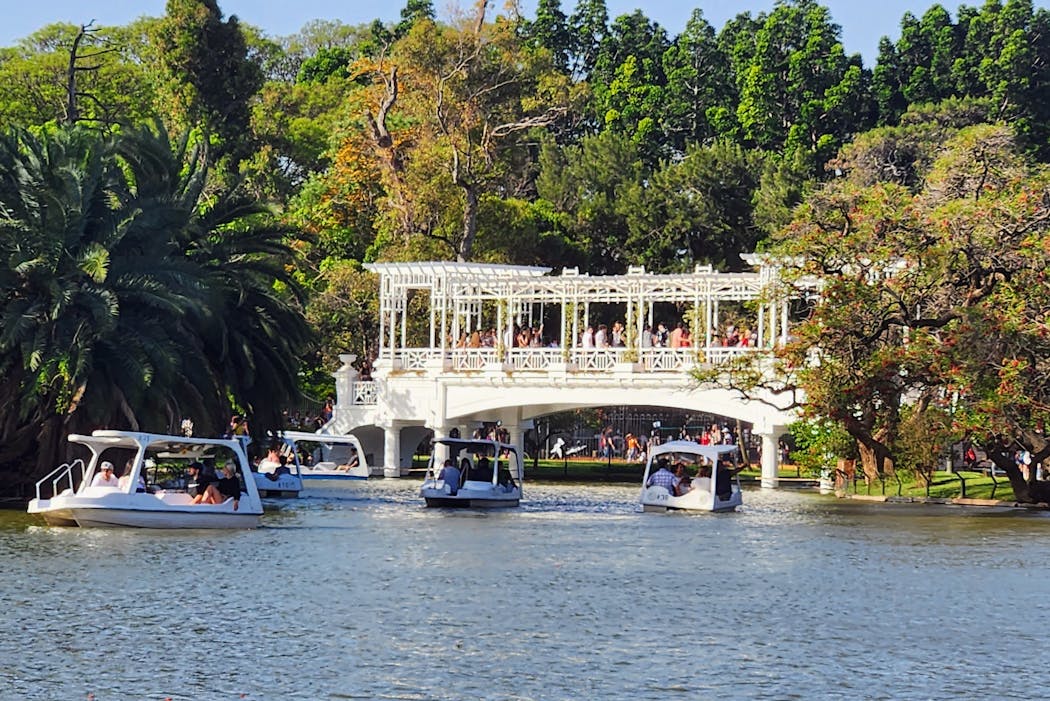
We crossed the wide avenue to the Rosedal, a regal garden of over 18,000 roses. A crowded "Greek Bridge" spanned the Lakes of Palermo, overlooking dozens of families gliding over the water in deluxe white paddleboats. Inflation or not, Argentines were enjoying Sunday life in a city that makes it easy to do so.
Days after we left, Argentina elected Javier Milei in a surprise landslide, and the country plunged into the economic unknown. As he takes office Dec. 11, it's unclear whether he'll try to "dollarize" the nation. If he's successful, he could beat inflation — and without pesos, there would presumably be no "tourist dollar" anymore. But his attempts at reform might also push the country further into crisis.
Whatever happens, I'm rooting for Argentina — a destination worth experiencing at any exchange rate.
Simon Peter Groebner is Travel editor for the Star Tribune.
- Legendary record store site in Minneapolis will soon house a new shop for musicheads
- Souhan: This is KAT's chance to prove Flip Saunders was right
- Why do so many Minnesota homeowners get free roofs after a hailstorm?
- Full jury of 12 people and 6 alternates is seated in Trump's hush money trial in New York
- Ex-Hennepin sheriff paid for drunk-driving damages with workers' comp
- Fired Mpls. teacher accuses management of 'cancerous rot'
4/20 grew from humble roots to marijuana's high holiday
Mandisa, grammy-winning singer and 'american idol' alum, dies at 47, how to get rid of nyc rats without brutality birth control is one idea, not a toddler, not a parent, but still love 'bluey' you're not alone, firefighters douse a blaze at a historic oregon hotel famously featured in 'the shining'.
- Some international destinations where Taylor Swift is playing in 2024 Dec. 8, 2023
- This wild backcountry ski area, six hours from the Twin Cities, is not for beginners — that's the point Dec. 1, 2023
- 'Van life' has its ups and downs over five nights in Northern California Nov. 24, 2023
- 9 reasons you won't recognize Las Vegas on your next trip • Travel
- Norway vs. Minnesota: A travel smackdown, from electric cars to social benefits • Travel
- 12 Florida winter destinations with direct flights from Minneapolis-St. Paul • Travel
- Buenos Aires is incredibly cheap for tourists right now — but will it last? • Travel
- A hiking adventure on Greece's largest island • Travel
© 2024 StarTribune. All rights reserved.

Tourist Dollar Rate
Us dollar / argentina peso : tourist dollar rate historical chart, dolar turista : periodical high, low & average.
This is the Tourist Dollar Rate of US dollar in Buenos Aires, Argentina.
This is known as the Foreign Tourist Dollar , it means payments made on foreign credit cards use the “ MEP ” (“Electronic Payment Market”) dollar exchange rate. In other words, if you’re paying by card, your dollars go further than before.
Currently, the “foreign tourist dollar” only works for purchases, and not cashpoint withdrawals.
Mastercard joined the program on December 2 and Visa followed suit just under two weeks later, meaning payments made in Argentina through foreign credit card from those companies are now processed at the MEP dollar rate.
Also known as : Tourist Dollar , Foreign Tourist Dollar , Dólar Turista
- Election 2024
- Entertainment
- Newsletters
- Photography
- Personal Finance
- AP Investigations
- AP Buyline Personal Finance
- AP Buyline Shopping
- Press Releases
- Israel-Hamas War
- Russia-Ukraine War
- Global elections
- Asia Pacific
- Latin America
- Middle East
- Election Results
- Delegate Tracker
- AP & Elections
- Auto Racing
- 2024 Paris Olympic Games
- Movie reviews
- Book reviews
- Personal finance
- Financial Markets
- Business Highlights
- Financial wellness
- Artificial Intelligence
- Social Media
Argentina adds another exchange rate -- for tourists only

FILE - A man checks rates at a money exchange house in Buenos Aires, Argentina, July 14, 2022. The government implemented a new regulation on Nov. 4, 2022 allowing visitors using credit and debit cards to obtain a more favorable exchange rate through financial markets that will give them far more pesos than the official rate. (AP Photo/Natacha Pisarenko, File)
- Copy Link copied
BUENOS AIRES, Argentina (AP) — In recent years, a moment often came when a visitor to Argentina suddenly grasped they could have gotten a lot more bang for their bucks if only they had brought cash to buy pesos on the unofficial market.
A dollar sometimes would buy twice as many pesos in informal cash trading as the amount in pesos it would get in purchases using a credit or debit card covered by the official exchange rate.
“You can almost hear the blood drain out of their voice when they realize this,” said Jed Rothenberg, owner of a travel agency that specializes in trips to Argentina.
That should, at least in theory, be a thing of the past as of Friday. The government has implemented a new regulation allowing visitors using credit and debit cards to get more pesos than the official rate gives.
On Friday, one dollar was officially worth 157 Argentine pesos. But in the unofficial market, commonly referred to as the “blue dollar,” it could be worth as much as 285 pesos. And in the system that will now be used by credit card operators it was at 292.
The informal foreign currency traders became more ubiquitous after strict capital controls were put in place in 2019 in an effort to protect the local currency from a sharp devaluation amid the country’s high inflation.
The government hopes the new rule for credit and debit cards will discourage all-cash transactions that leave cash-laden tourists more vulnerable to robbers — and also often deprive the government of sales taxes that are frequently ignored if there is no electronic trail.
Rothenberg sought for years to explain Argentina’s different exchange rates and the difficulties that tourists faced in using credit and debit cards. He wasn’t always successful.
“The vast majority of people are just confused: ‘You mean there’s more than one exchange rate and that one of these can be as much as a double- or even triple-digit difference?’,” Rothenberg said.
The new rule won’t do much to reduce confusing complexities. It adds yet another exchange rate to the more than 10 that already exist in Argentina — a system that makes it impossible to say simply what a peso is worth.
The government also imposes different taxes on converting foreign currency depending on what it will be used for, leading to rates that have colloquial names like the “Qatar dollar” for travelers (a reference to the World Cup), the “Netflix dollar” for streaming services and the “Coldplay dollar” to book foreign artists to play in the country.
The reason why no one can really answer how much a peso is worth is because “it’s worth something different for each person,” said Martín Kalos, an economist who is a director at Epyca Consultores, a local consultancy.
“The government has been segmenting the market. There is no one value, there are multiple prices depending on who you are or what operation you want to do,” he said.
The government’s goal is to have a stronger peso to pay for the country’s imports in hopes of keeping prices rises from worsening. The economy registered an annual inflation rate of 83% in September.
Fernández’s administration “is implementing palliative measures, or patches, because it has elections a year from now” and any efforts to correct these distortions would likely cause economic pain that would be costly at the ballot box, Kalos said.
Argentina has gone through so many financial crises in recent decades that its citizens are distrustful of their currency, so those who earn enough to save usually do so in dollars or euros.
Even economically savvy Argentines are often confused.
Anyone who has not received subsidies from the state or who operates in certain financial markets can buy as much as $200 a month but must add an additional 65% tax to the official exchange rate.
Argentines who pay for foreign currency purchases on their credit cards pay a surplus of 75% over the official rate. But that is as long as they spend less than $300. If they spend more than that a month, the surplus increases to 100%.
Argentines can also buy dollars through the financial markets via operations through bonds or stocks but pay a peso price similar to that in the informal market. That is the system made available to credit card processing companies Friday.
Experts said they have to see how the new system for visitors is implemented before knowing whether it will be succesful.
But if implemented well, Rothenberg said the change could be a boon for tourists.
“They’re just using their credit card, they don’t care about the details,” he said. “If they actually make this work, Argentina could be one of the top tourist destinations within the next couple of years, especially with how expensive the U.S. and Europe are right now.”
Desperate for dollars, Argentina just gave digital nomads another advantage over locals
Foreign bank card holders now get better exchange rates than argentines..
- Tech nomads earning in U.S. dollars are moving to Argentina, where their salaries afford them better lifestyles than most locals.
- Argentina has recently allowed international card holders a preferential exchange rate to get dollars into the country.
- The preferential exchange rate adds to the purchasing power disparity between foreigners and Argentines, who are fighting rising inflation and the local currency’s devaluation.
Last December, Emely Lissette Mercado, a Los Angeles-area native working remotely for a U.S. payroll startup, decided to move to Buenos Aires. For around $1,000 a month — less than half the average monthly rent of a one-bedroom apartment in LA — she was able to rent a furnished studio in the hip Palermo district, take taxis or Ubers everywhere, and eat out every day.
For those earning in dollars, the cheaper, more comfortable lifestyle possible in Argentina after the peso’s depreciation has been the allure for years. Recently, nomads like Mercado have been handed an additional advantage over locals: As international bank account holders, they’re now able to access a better conversion rate while changing U.S. dollars into Argentine pesos, using what the government has termed the “ foreign tourist dollar .”
Argentines are not offered such generous terms. Locals get around 250,000 Argentine pesos for every $1,000, while international bank account holders get over double — 500,100 pesos. To get anywhere close to the tourists’ rates, locals need to find dollars on the black market — something foreigners paying with an international card can now avoid altogether.
“It’s hard for me to understand these types of currency policies when a large part of Argentina’s inhabitants are facing so many difficulties,” federal employee Carolina Costa told Rest of World , speaking under a pseudonym because she feared her opinion would compromise her job. “We’ve already seen how the influx of digital nomads has completely changed the prices with which we have to live.”
Mariana Luzzi, a sociology professor and research economist at CONICET, a state-funded research council, told Rest of World Argentina depends on U.S. dollars to pay for imports and to keep up with interest payments on its foreign debt . Its current monetary policies aim to keep as many dollars within its borders as possible, by incentivizing people to spend them locally and making it harder to buy dollars with Argentine pesos.
Until last November, foreigners had to comply with the same currency exchange restrictions as locals. Then, the Central Bank decided to implement the foreign tourist dollar, a decision that came at the height of Argentina’s popularity as a destination for foreign tech workers. Experts and officials close to the policy change told Rest of World the foreign tourist dollar was instituted to capitalize on those who had previously visited Argentina but not used the government’s pre-approved channels to spend their dollars, often opting instead for the black market dollar exchanges Argentines still have to use.
This was a disincentive for many nomads, who were unsure of how to navigate a foreign exchange black market. Before the new payments policy, said Mercado, the challenge for nomads was learning how to handle the exchange, especially because Western Union — previously the only other way to get dollars legally in Argentina as a foreigner — often runs out of cash.
The new policy is yet another incentive for tech workers to choose Argentina as their destination. About 6400 of them arrive each month , and Buenos Aires has consistently been on the top 10 list of digital nomad destinations compiled by Nomad List, an online resource for the community. Meanwhile, local Argentines told Rest of World they saw no benefit for themselves from the changed policy, only a broadening of the preexisting purchasing power gap between them and the nomads.
“As an expat, I know we’re living two different lives.”
Sabrina, a 33-year-old tech worker from New York City, told Rest of World she’d chosen to work from Buenos Aires over Rio de Janeiro because it was so affordable for someone who earned in dollars. Speaking under a pseudonym because her company didn’t know she had surpassed her annual remote work quota, Sabrina said she arrived three months before the foreign tourist dollar came into force. She said she had to get used to bringing tote bags to Western Union when she went to exchange her dollars for piles of pesos.
“Using my credit card is much more convenient,” Mercado told Rest of World. She said she’s less mindful about her spending because she doesn’t need to worry about the hassle of procuring and exchanging dollars. Mercado was conscious, however, of her and her fellow nomads’ privilege compared to the locals. “As an expat, I know we’re living two different lives,” she said.
It is a gap that the foreign tourist dollar has only widened, and which does not seem to have benefited local businesses catering to card-using digital nomads. Agustín D’Elio has managed La Huerta, a coworking space in Palermo, since 2018. He told Rest of World that though he’d seen an increase in foreign clients over the past year, the foreign tourist dollar policy was actually setting him back.
The main reason, D’Elio said, was that customers now mostly paid with international debit and credit cards. When foreigners use their cards, it’s the Argentine government that keeps the dollars, with his bank depositing the money in his local peso account. To make matters worse, it takes “some 20 to 30 days before we actually get the deposit [in pesos]. With this inflation, that’s very inconvenient,” he said.
For locals, the foreign tourist dollar policy is a Catch-22 situation. There are so few dollars that the government is forced to incentivize foreign consumption locally — given their longer stays and disposable income, digital nomads form a key demographic. “The alternative to not getting more dollars into the country to pay for the debt would be to further devalue the peso,” Luzzi, the economist, said. “This would, in turn, make things even more expensive for locals.”
Access & Connectivity Bangladesh built a tech park for 100,000 workers. Now it’s a ghost town The facility was partly funded by the World Bank and touted to become the country’s “cyber capital.” By Faisal Mahmud and Zuha Siddiqui
Silicon Valley in Rest of World How RRR’s success brought a wave of Telugu-language movies to Netflix Netflix's U.S. catalog has more content in Telugu than in German, Russian, or any dialect of Chinese. By Russell Brandom
The Rise of AI How we’re tracking AI incidents around global elections Rest of World is collecting examples of AI being used for campaigning, misinformation, and memes in a regularly updated tracker. By Victoria Turk
Two Isn't Always Better Than One: Argentina's New Tourist Exchange Rate

Albert Drouart
CPTO & Co-Founder of Pagos
February 6, 2023

When you spend as much time with payments data as we do at Pagos, you’re never really surprised when something changes that impacts businesses and customers when they try to transact. This can be especially tough for merchants who are trying to establish good relationships with new customers or keep existing customers happy. The November 2022 announcement of the introduction of Tourist Exchange Rates —also called the MEP (Medio Electrónico de Pagos) rate—by the Argentinian Central Bank is one such impactful change.
Without going into full details around the economics of the situation, the key thing to highlight about this change is that the Central Bank of Argentina is allowing visitors to convert money to Argentinian Pesos at a more favorable rate (40% more Argentinian Pesos for your dollars or Euros) when compared to the official published central bank rate. This is in order to incentivize more dollars, euros, and pounds to go through the central bank and help build up badly needed foreign currency reserves. The chart below shows the gap between the “blue” exchange rate which is the one that you can get on the streets of Buenos Aires and is significantly better than the official central bank rate. Getting more of those currencies into the bank is the point of the tourist rate.

In order to make this easy for tourists, starting in December 2022 the major card networks have made the tourist rate available automatically when paying with credit cards in Argentine Peso (ARS). To be clear, this is now the law of the land in Argentina, so everyone needs to comply—including the card networks and banks—and it applies to both online and in-person transactions.
These types of regulatory changes happen all the time and have an impact on how payment processing works because the entire ecosystem—card networks, acquirers, issuers, and gateways/PSPs—have to adjust. In this particular case, the introduction of two foreign exchange (FX) rates could be impacting you and your acquirers right now.
Why This Matters
These changes only matter if you are transacting in ARS. If you are not transacting in ARS then you can skip to the end, although I think some of the payment geeks reading this will stick around. If you are transacting in ARS then the next question is: are you doing local or cross-border acquiring ? Meaning, do you have a local entity in Argentina or are you working with a provider that has localized your transactions?
If you are local in Argentina then you are already expecting to get paid in ARS locally, and most of your transactions will probably not be converted. If any foreign cards are processed domestically in Argentina they will be converted at the tourist rate. This means that you’ll get the ARS you expect and the cardholders will benefit from the better exchange rate, ultimately paying less. This is a skip to the end scenario too.
If you are a company transacting in Argentinian Peso, are not local in Argentina, and are settling in your home currency (AKA cross-border acquiring), then it’s important to note that:
You may be receiving less than you expect from your ARS transactions since the card networks agreed to automatically apply the Tourist FX rate in December 2022. A company’s settlements for transactions in ARS with non-Argentian cardholders will likely be disbursed to you at a lower value in USD, EUR, or GBP which can cause problems with reconciliation, refunds, and chargebacks.
Some acquirers and networks have started blocking transactions completely . It is difficult for networks and acquirers today to operate in two different FX rates for the same transaction currency based on the location of merchant and cardholder so the different card networks have selected different FX rates, and reconciliation problems are growing. Going forward, this means some of your customers may need to change how they pay you and conduct business with you to avoid the ARS transaction currency altogether.
If you are transacting in ARS and you are not local in Argentina. This means that all of your transactions will be subject to some form of FX conversion ; the question then is who pays for what?
Cardholders: Argentinian cardholders are not eligible for the tourist rate in any use case. If you are transacting and settling cross-border with Argentinian customers, you’ll get paid in USD, EUR, or GBP based on the official currency exchange rate for non-tourists.
Merchants: If you happen to be transacting with non-Argentinian cardholders who prefer to pay in Argentinian Pesos either through geo-location, or selection, then you need to make sure that when you convert your prices to ARS you select the correct rate. In this case you should already be expecting non-local currency for disbursement to your bank account, so the big question to consider is what is the FX rate to use when converting your pricing to ARS for the transaction?
This last “merchant pays” use case is the one where problems arise depending on how you set your ARS pricing: you now have to select the correct rate, and selecting the correct rate is a complex choice that includes understanding where a cardholder is, how the networks are implementing the two FX rate structure, and who your FX rate provider is in the first place.
So if you are a cross-border merchant offering ARS to non-Argentinian cardholders and using some form of dynamic pricing based on USD, EUR, or GBP costs, at least two or three of these questions will be relevant to you:
What part of my volume is impacted by these changes, if any?
Has my performance on this volume changed at all, and if so, is it due to transactions being blocked?
Does my margin cover my FX costs? Does my FX rate choice match with the method that my acquirer is using to settle ARS to me? How will they report it? Do I see changes in my settlement for impacted transactions?
[If offering ARS as a currency at checkout and settling in a different one] What rate should be used to show customers that price?
How will we handle refunds and chargebacks with two FX rate scenarios for these events?*
*Refunding in particular will be complex going forward because it requires you to know which FX rate to use to calculate ARS refunds. Some acquirers and networks have proposed prohibiting refunds in ARS, which could further complicate things and may necessitate you finding an alternative payment method.
Assessing the Impact
Your payments data combined with network data can help you identify the impacts of regulatory changes and how you might manage it going forward. Payments geeks that we are, we opted to do some experiments to see how our band of Pagos birds could help.
With Peacock by Pagos you can easily use data filters to create views that allow you to see your volume:
In ARS (currency filter)
On your non-local Merchant IDs (Processor > Merchant Account ID filter)
On non-Argentinian cards (Card Country/Region filter) for all your merchant accounts that are not local in Argentina

Once you filter your data like this, you’ll see all those transactions in your volume that are on cross-border merchant accounts, processing in transaction currency ARS, and all countries outside of Argentina. When looking at your processor approval and volume charts you’ll see something like this:

What we see in the graph are customers from non-Argentinian issued cards processing ARS transactions cross-border. This amounts to 1,000 to 2,000 transactions per month that will be impacted by regulatory changes. Depending on the details of this situation, unforseen costs could add up quickly. Questions to ask:
Is this volume being settled at the expected FX rate?
Are these transactions now being blocked?
Does the impact to transactions vary by segment?
By Decline Code Distribution
We also looked at this example merchant’s decline details for recurring as well as non-recurring transactions to see what has happened over the last few weeks and whether the decline distributions changed.

Start by looking at the yellow marks on January 28th: these are blocked transactions, indicating there is no longer a transaction “route” available.
It only took a couple of clicks to answer some key questions in Peacock. You can also look deeper into refunds, chargebacks and disbursements of processed ARS transactions. Our built-in filters and charts enable you to answer payment data questions quickly, inform your stakeholders, and prepare operationally for challenges in chargebacks and refunds. While you’re at it, consider using Canary by Pagos to monitor for and alert you to events like this as they’re happening versus finding out later when more damage has been done.
Guide Customers Using BIN Details
Many problems can be avoided by communicating expectations with your customers upfront, controlling what currencies and products are offered at checkout, and giving your customer service representatives more and better context. We’ve squawked about the importance of accurate BIN data plenty, so it should come as no surprise that Parrot by Pagos , our direct-from-network BIN service can really be useful for these use cases (and more).
We have all the data you need to identify customers impacted in the two FX rate use case. Once you provide us with a 6, 8, or 9-digit BIN we will respond with which country the card is from as well as other associated attributes including whether it is enabled for cross-border, the card product type, and whether it’s in a token range or a PAN range. With a card’s country of issuance alone, you can start to make decisions about how you process that payment, in what currency, and even what FX rate you use on the transaction. You can also use Parrot to do a deeper analysis on which of your customers are impacted, as was described in earlier sections of this post, by linking the BIN details to your transaction database and starting your own analysis. (Or you could just put a bird on it . Peacock is made for the job.)
If you are processing transactions in ARS for settlement outside of Argentina and transacting with both local Argentinian card holders and non-Argentinian cardholders, consider these factors when using BIN data to streamline your checkout flows:
If you identify Argentina-issued card customers at time of checkout, make sure that your internal pricing conversion (if applicable) is based on the official conversion rate since these customers are not eligible for the tourist rate.
For customers using non-Argentinian cards, you could block ARS as a currency choice (we believe Visa and some acquirers are doing this at the network level) and offer an alternative: this avoids the downstream headache of disbursement reconciliation and refund processing. If you don’t want to lose these customers, give them an option to pay with a different currency.
Both of these require a simple API call to Parrot or Parrot Batch and you’ll be set to make better decisions.
The power of payments data is in the details: being able to use that granularity to understand what’s actually happening in your payments stack enables you to make better decisions about your vendors, your customer experience, and your technical setup. Industry and regulatory changes can create a lot of bespoke work. Whether it’s related to the performance of new technologies like network tokenization or further changes in currency regulation (Nigeria and Egypt are considering changes similar to Argentina’s), the best way to navigate that environment is 1) having access to your payments data and 2) using tools that make it easy to understand what’s going on and execute meaningful change.
We’re here to help, and we’d love to hear from you about this topic or other data-driven challenges you’re experiencing! Contact us today !
Latest Blog Posts

Optimizing Your Retry Strategy

Empower Your Business With Payments Data Benchmarking

The Pagos Flock Migrates to MRC Vegas 2024
Stay Updated
By submitting, you are providing your consent for future communication in accordance with the Pagos Privacy Policy.
- Argentina Tourism
- Argentina Accommodation
- Argentina Bed and Breakfast
- Argentina Holiday Rentals
- Argentina Flights
- Argentina Restaurants
- Argentina Attractions
- Argentina Travel Forum
- Argentina Photos
- All Argentina Hotels
- Argentina Hotel Deals
- Last Minute Hotels in Argentina
- Things to Do
- Restaurants
- Holiday Rentals
- Travel Stories
- Rental Cars
- Add a Place
- Travel Forum
- Travellers' Choice
- Help Centre
Exchange rate update please - Argentina Forum
- South America
- Argentina
Exchange rate update please
- Australia Forums
- United States Forums
- Europe Forums
- Canada Forums
- Asia Forums
- Central America Forums
- Africa Forums
- Caribbean Forums
- Mexico Forums
- South Pacific Forums
- South America Forums
- Middle East Forums
- Honeymoons and Romance
- Business Travel
- Train Travel
- Traveling With Disabilities
- Tripadvisor Support
- Solo Travel
- Bargain Travel
- Timeshares / Holiday Rentals
- South America forums
- Argentina forum

Any advice will help. Thank you a lot.
6 replies to this topic

Here is one of several websites you can check
https://bluedollar.net/
Also look at Western Union, their rates have been higher than the blue or MEP (foreign credit card rate).
Your trip is many months away, and many things can change between now and October.

Prices always drop 3-5 months before your trip.
With the current unrest in BA --- many people will cancel and this has the wonderful effect of lowering prices.
This time last year ---price from Sacramento to EZE was $1500 per person and we just waited a month...... our final price was $1120 economy with one checked bag for each of us.
@CraigandMolly Thank you very much for the website. Should i refer to "Informal rates" or "Tourist Dollar Rates" in my case? Sorry for asking further as I have no experience in website of this kind.
I'd like to say, not only the flight tickets, the hostels that i am going to stay told me the bus fare between Puerto Iguazu downtown and the Falls has risen to 3900 pesos already, and they expect it will go up again in September. The entrance ticket to the Falls is now 200,00 pesos. Can't image how high the price will become at the time i travel, really scaring me.
@CraigandMolly I found out the difference between the Informal Rates and Tourist Dollar Rates. Sorry for bothering you. Thank you.
- Northern Patagonia Local Car Rental 04:30
- JetSmart payment 02:50
- Exploration Journeys Tour Operator. 23:19
- Planning for 10 day self drive around Salta 22:08
- Can I exchange gold for peso? yesterday
- Mercado Agroganadero mart Buenos Aires yesterday
- Buying Teatro Colon tickets online yesterday
- Dengue news yesterday
- Four Nights in the Salta Region 17 April 2024
- Steak restaurant question 17 April 2024
- Cost for Tourist 16 April 2024
- NYC to BA Flight Price? 16 April 2024
- Seeking Tips for a Travel Agent in Argentina 16 April 2024
- Patagonia in May 16 April 2024
- puerto natales to el calafate/Chalten bus schedule 4 replies
- Latest ATM Withdrawal Limit In Argentina. 11 replies
- Travel Card = best means of money in South America? 4 replies
- Best way to South America from Sydney? 5 replies
- suggestion for prepaid sim card for temporary use 2 replies
- Reciprocity Tax (Entrance Fee) at Buenos Aires EZE airport 15 replies
- Travel from Iguazu Falls to Mendoza 3 replies
- Best/safest bus company's 13 replies
- April in Buenos Aires-What might the weather be like? 4 replies
- Help - Any bus Cordoba to Mendoza 5 replies
- Driving in Argentina for Overseas Visitors
- What is the best way to travel around Argentina
- Bus travel in Argentina

We've detected unusual activity from your computer network
To continue, please click the box below to let us know you're not a robot.
Why did this happen?
Please make sure your browser supports JavaScript and cookies and that you are not blocking them from loading. For more information you can review our Terms of Service and Cookie Policy .
For inquiries related to this message please contact our support team and provide the reference ID below.

UnionPay cardholders now get foreign tourist dollar rate
The agreement with the major chinese card company is part of a package aimed at attracting the country’s tourists to argentina.

- June 16, 2023
Visitors to Argentina who use debit and credit cards issued by Chinese company UnionPay will get almost twice as many pesos as before after the company moved from the official exchange rate to the foreign tourist dollar exchange rate .
The Central Bank enabled the Shanghai-headquartered financial services corporation to switch to the new rate yesterday. Payments made in Argentina with UnionPay cards will now use the MEP dollar (the Spanish acronym for Electronic Payment Market) exchange rate —currently AR$479.35 to the dollar— instead of the official exchange rate of AR$259 per dollar at the time of writing.
The foreign tourist dollar was launched on November 4 as a way to make the country cheaper for tourists and dissuade them from going to illegal exchange houses that offer the blue dollar exchange rate. The government also hoped the measure would boost reserve accumulation, as the country is suffering a major international reserve scarcity crisis , mainly due to a historic drought that reduced income from agricultural exports.
UnionPay now gives cardholders the same rate as Visa, Mastercard, Cabal, and electronic wallets such as Pix . American Express has not adopted it to date.
A government source confirmed to the Herald that the cards bring dollars into the country because, while the Chinese currency is the yuan, the transactions go via the dollar. He also confirmed that the new rate is already in operation for UnionPay cardholders.
The foreign tourist exchange rate allows the dollars tourists use to make payments to be exchanged into pesos through the financial market, instead of in the official foreign exchange market. Although the Central Bank will no longer receive these tourists’ dollars through the official market, the funds increase Argentina’s gross reserves.
The “foreign tourist dollar” only works for purchases, and not cashpoint withdrawals.
Chinese cards in Argentina
According to RBR, a London-based research and consulting firm, in 2015 UnionPay dethroned Visa and Mastercard and now has the largest share of global card spending – it was 48% in 2021. This is mainly due to spending in China, where UnionPay accounts for 95% of the total.
Two weeks ago, on the last day of his week-long official trip to China , Economy Minister Sergio Massa said that growing numbers of Chinese tourists are choosing Argentina as a destination.
“Tourism between China and Argentina generates economic growth and new jobs in our country,” he said. “That is why we are accelerating the implementation of direct flights and the use of the most popular electronic payment systems in yuan in China.”
Massa also said that the Argentine government is seeking to make it easier for Chinese tourists to get visas, and will attempt to reduce the wait for the paperwork to just one week.
According to data from Argentina’s Tourism Information System, China ranks 16th in the ranking of inbound tourism in Argentina, with almost 76,000 arrivals in 2019. The average Chinese visitor spent US$1,860 during their stay, or around US$122 per day.
“The development of Chinese tourism in Argentina is one of the strategic vectors to solve the foreign currency income [problem],” said a communiqué the Economy Ministry released during Massa’s China visit. “Through these incentives the country could go from receiving an average of 70,000 tourists per year to almost 500,000”
Related Posts

- Infrastructure
- Food & Drinks
- Essential Buenos Aires
- In Patagonia
- The Wetlands
- Terms & Conditions
All Right Reserved. Buenos Aires Herald
- Culture & Ideas
- The Archives
- Argentina 101
- What to do in Argentina

IMAGES
VIDEO
COMMENTS
One of the exchange rates is the " Foreign tourist dollar ". When making a credit card payment in Argentina you have a much more favorable exchange rate compared with the official. This means that payment at the official rate is not 10 USD but 5 USD for example. The official rate is 1 USD = 841 ARS, Foreign tourist dollar is 1 USD = 930 ARS.
But on November 4, Argentina's central bank launched a preferential exchange rate for foreign tourists. Known as the "foreign tourist dollar", it means payments made on foreign credit cards use the "MEP" ("Electronic Payment Market") dollar exchange rate, which is currently AR$331.79 to the dollar. In other words, if you're ...
Avoid exchanging money into pesos before you arrive in Argentina - you'll get screwed over. Bring US$100 notes - the cleaner and crisper, the better. You'll get a better rate for these in the cuevas. Cuevas will rarely want to change US$10 or US$20 notes. I've changed US$50 notes, but it was done reluctantly.
Argentina Adds Another Exchange Rate—for Tourists Only The Argentinian government implemented a new regulation on November 4, 2022, allowing visitors using credit and debit cards to obtain a more favorable exchange rate than the official rate. ... "If they actually make this work, Argentina could be one of the top tourist destinations ...
By way of example, taking into account the exchange rates on December 15, 2022, if a foreign tourist pays for something in Argentina with a credit, debit or prepaid Visa card issued abroad, instead of having their consumption in pesos calculated at the official exchange rate (for example, ARS $166 per dollar on December 15, 2022), the ...
A new regulation known as "the foreign tourist dollar" was put in place in Argentina on November 4, 2022, in an attempt to ease the burden. It's designed exclusively to address tourist-friendly currency exchange rates. While it doesn't necessarily simplify the complex system in place, it could make using credit and debit cards a streamlined ...
The " dólar ahorro " (savings dollar) is the rate Argentines get by just exchanging pesos for dollars at a bank or exchange house into their domestic bank accounts. It's the official retail exchange rate plus 100%, which derives from a combination of two taxes. The current value of the dólar ahorro is AR$735.5.
Understanding exchange rates in Argentina and what the 'dólar blue' is can halve the cost of your trip. Here's what you need to know. Understanding exchange rates in Argentina and what the 'dólar blue' is can halve the cost of your trip. ... Official Rate: Tourist Dollar - MEP Rate: Dólar Blue: Western Union: Rate (ARS:USD) 349:1: 656:1 ...
Earlier this year, the country began allowing foreign tourists to exchange as much as $5,000 cash for pesos at a more lucrative exchange rate than the official one. In 2021, the capital city of ...
Argentina introduces better exchange rate for tourists that will help holiday money go further ... one US dollar was officially worth 158 Argentine pesos, but a tourist could get up to 285 pesos ...
This has created parallel exchange rates in Argentina. One such exchange rate is the tourist exchange rate. For the same 1 USD, you get almost double the amount of Pesos in your hand. This only applies to credit cards and not cash or debit cards. It is important to know that some companies increase the total amount in Argentine pesos so that it ...
To illustrate the huge breach: in January 2021, the official rate for one U.S. dollar stood at approximately AR$86, while the parallel market offered around AR$151. This spread escalated by January 2022, with the official rate at $104 and the parallel market soaring to $204.
However, on December 15, 2022, Argentina introduced the MEP rate (Medio Electrónico de Pagos) or Tourist Exchange Rate, specifically for credit card companies. Now, foreigners using their credit, debit, or prepaid cards in Argentina receive more favorable exchange rates.
Tourist can travel to Argentina and use their credit card at the tourist exchange rate. But what is it exactly? How does it work? And what to look out for. A...
The Dolar Blue rate is considered closer to the MEP exchange rate, so with Argentina's introduction of an exchange rate closer to this; tourists will be able to stop carrying around so much cash and use their credit and debit cards without being penalized. Top 5 Travel Insurance Plans For 2023 Starting At $10 Per Week.
Pagsanjan wasn't alone: in recent weeks, tourist forum users have started to claim that the foreign tourist dollar rate, which launched in November and charged them the MEP exchange rate (currently at AR$359 per dollar), had been abolished. Their card purchases seemed to be going through at the official exchange rate, AR$193 at the time of ...
Whatever happens, I'm rooting for Argentina — a destination worth experiencing at any exchange rate. Simon Peter Groebner is Travel editor for the Star Tribune. [email protected] ...
This is the Tourist Dollar Rate of US dollar in Buenos Aires, Argentina. This is known as the Foreign Tourist Dollar, it means payments made on foreign credit cards use the "MEP" ("Electronic Payment Market") dollar exchange rate.In other words, if you're paying by card, your dollars go further than before.
FILE - A man checks rates at a money exchange house in Buenos Aires, Argentina, July 14, 2022. The government implemented a new regulation on Nov. 4, 2022 allowing visitors using credit and debit cards to obtain a more favorable exchange rate through financial markets that will give them far more pesos than the official rate.
Locals get around 250,000 Argentine pesos for every $1,000, while international bank account holders get over double — 500,100 pesos. To get anywhere close to the tourists' rates, locals need to find dollars on the black market — something foreigners paying with an international card can now avoid altogether.
This can be especially tough for merchants who are trying to establish good relationships with new customers or keep existing customers happy. The November 2022 announcement of the introduction of Tourist Exchange Rates —also called the MEP (Medio Electrónico de Pagos) rate—by the Argentinian Central Bank is one such impactful change.
May 7, 2023. Foreign tourists who use digital wallets to pay with US dollars in Argentina will get 91% more pesos per dollar now, as per a resolution enforced yesterday by the Central Bank. Specifically, the monetary authority made the preferential " foreign tourist dollar " exchange rate —launched last year for international debit and ...
Can anyone update the exchange rate between... Argentina. Argentina Tourism Argentina Hotels Argentina Bed and Breakfast Argentina Vacation Rentals Flights to Argentina ... Bus travel in Argentina; Argentina Destination Experts. ReiseBeate. 40,888 forum posts. ricardoBA. 17,524 forum posts. verobaires.
Can anyone update the exchange rate between... Argentina. Argentina Tourism Argentina Accommodation Argentina Bed and Breakfast Argentina Holiday Rentals Argentina Flights ... Bus travel in Argentina; Argentina Destination Experts. ReiseBeate. 40,888 forum posts. ricardoBA. 17,524 forum posts. verobaires.
Argentina's surging inflation threatens to crimp a key source of tourism revenue as foreigners who piled $3.2 billion last year into the country that's short on dollars opt for other destinations.
Payments made in Argentina with UnionPay cards will now use the MEP dollar (the Spanish acronym for Electronic Payment Market) exchange rate —currently AR$479.35 to the dollar— instead of the official exchange rate of AR$259 per dollar at the time of writing. The foreign tourist dollar was launched on November 4 as a way to make the country ...